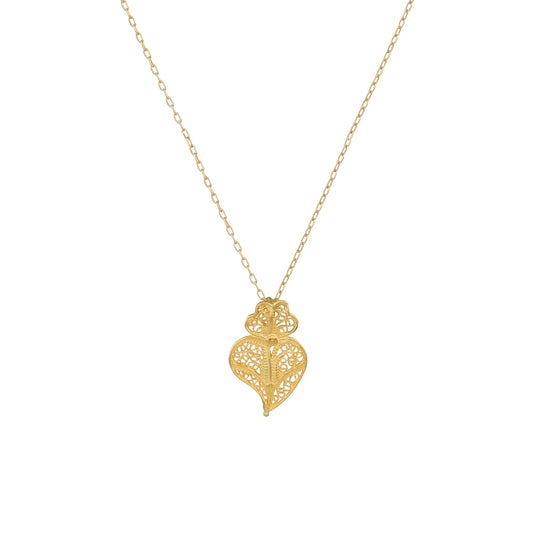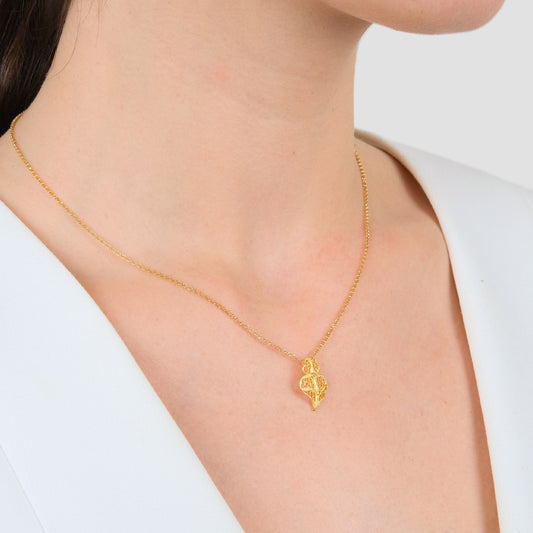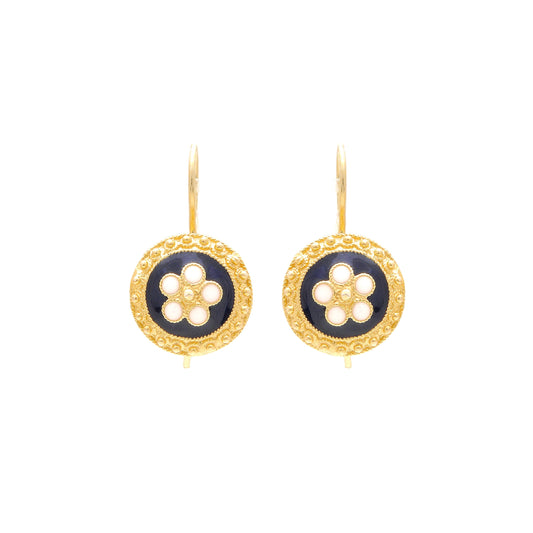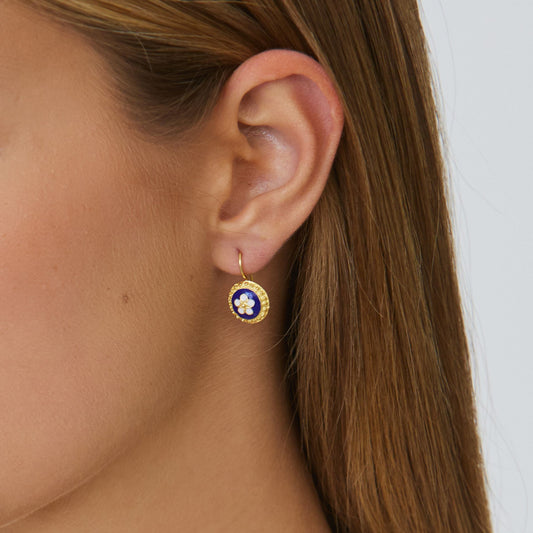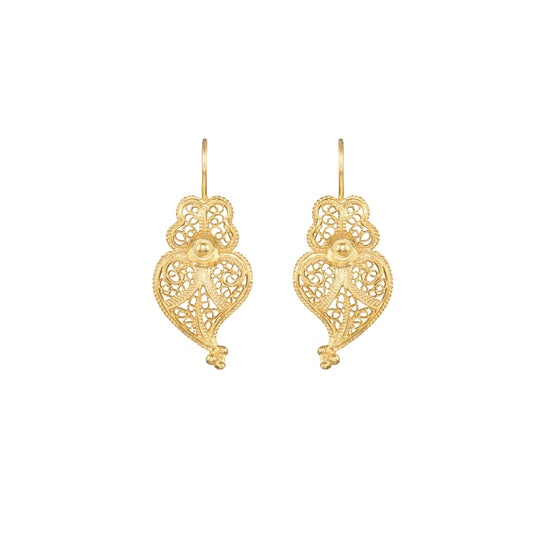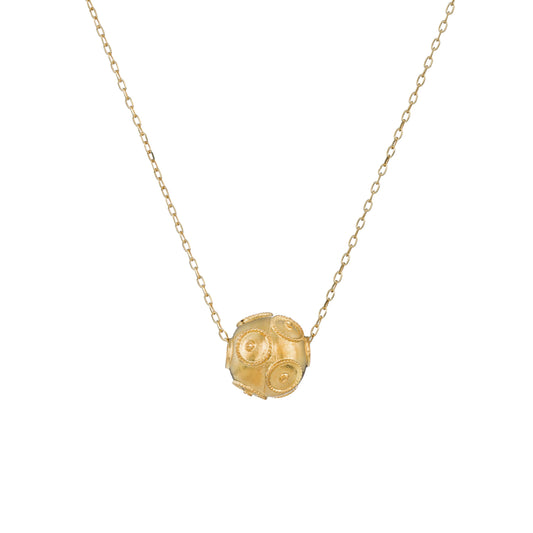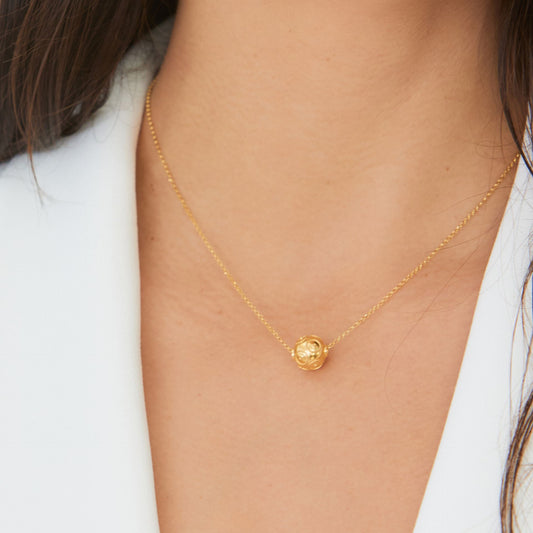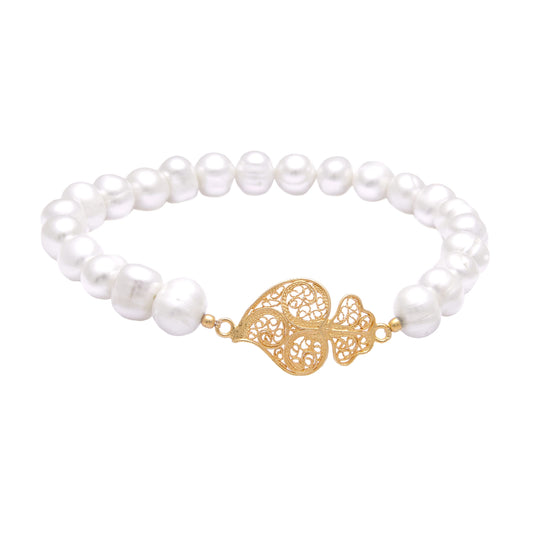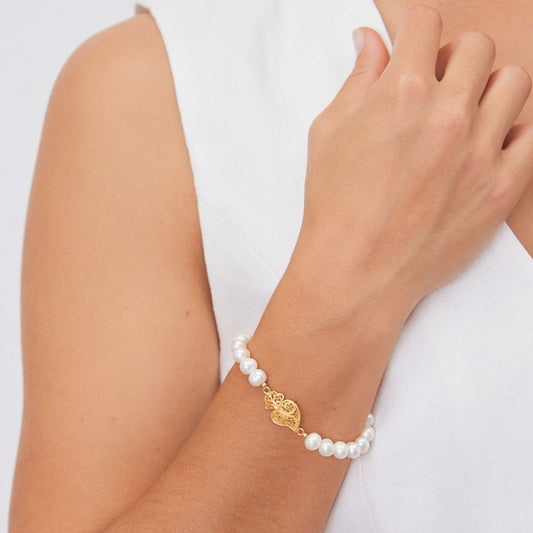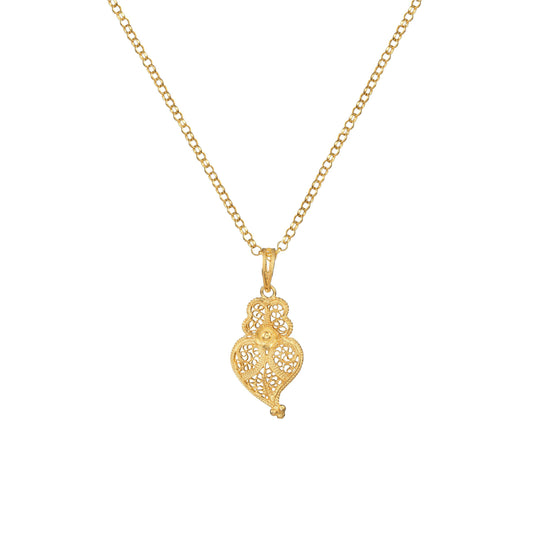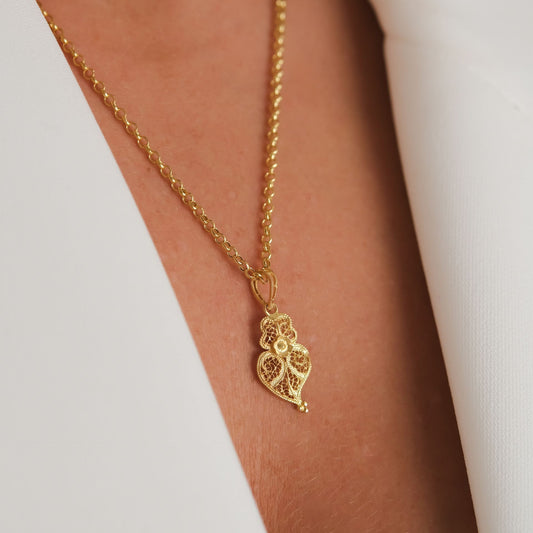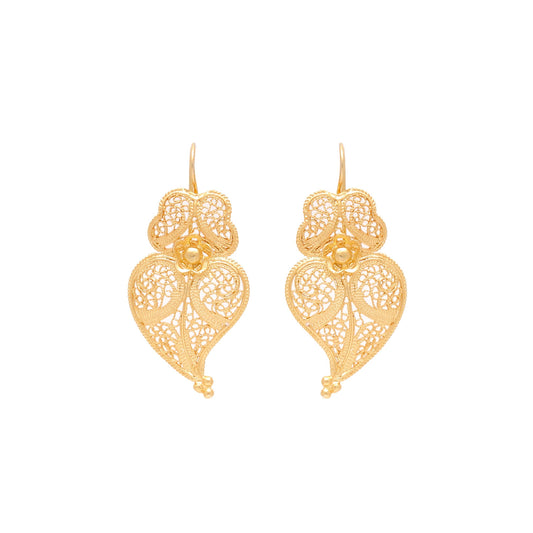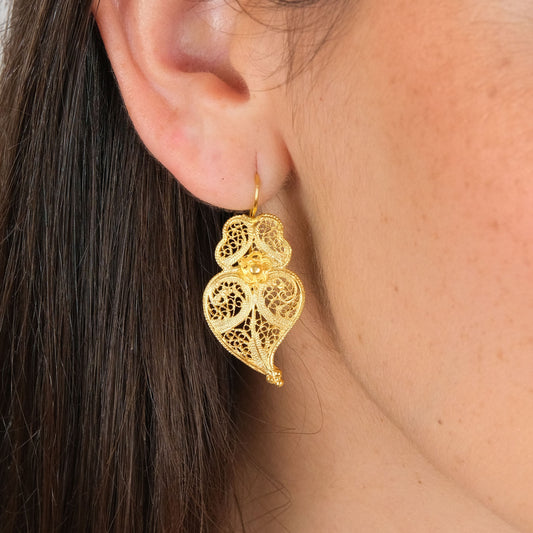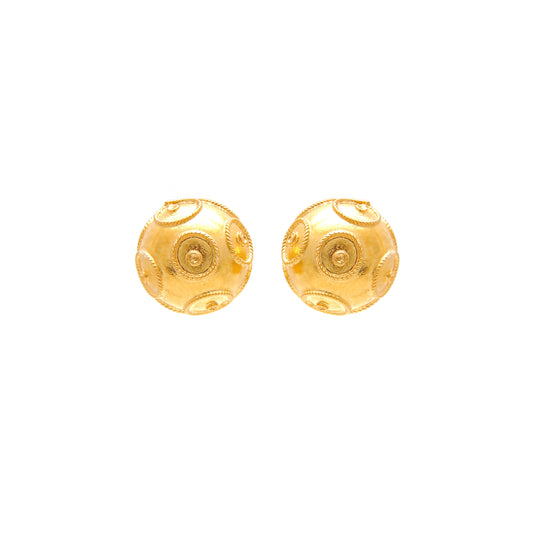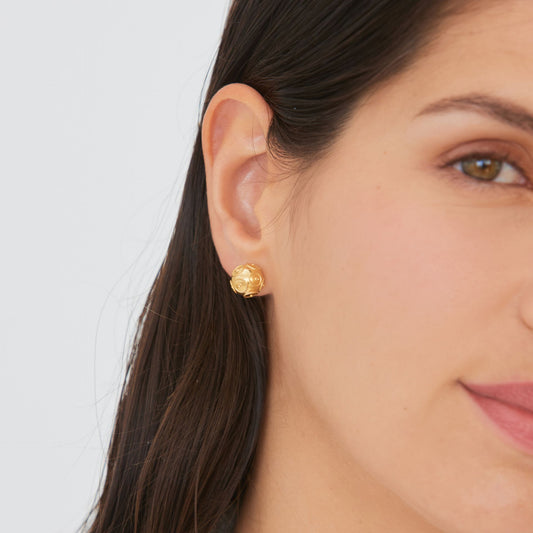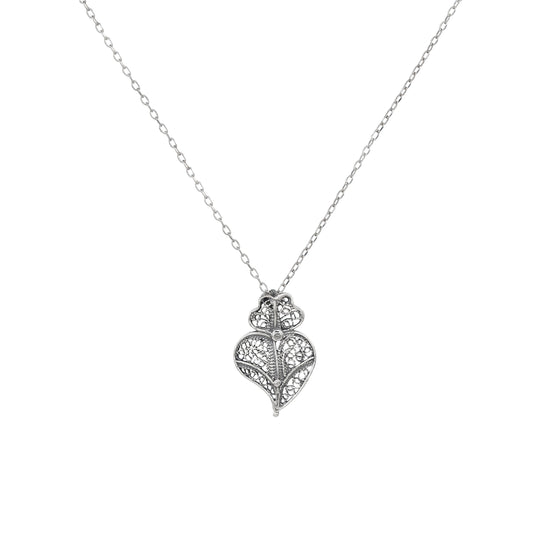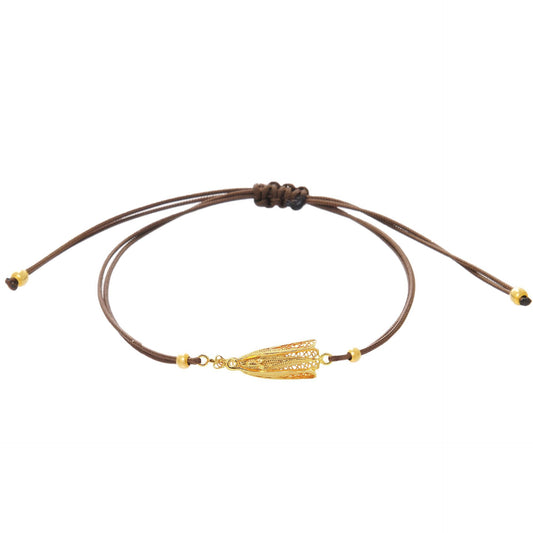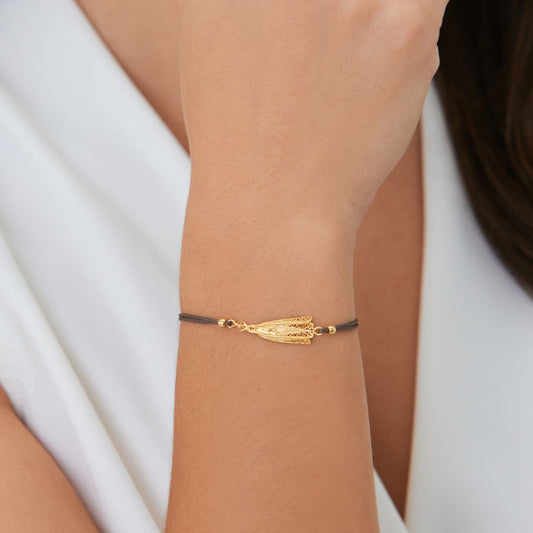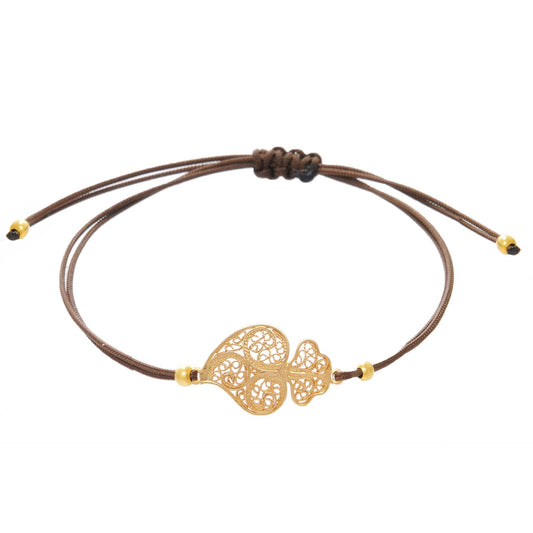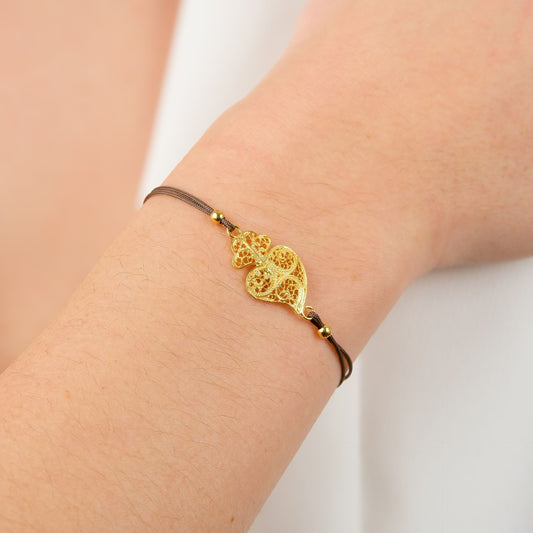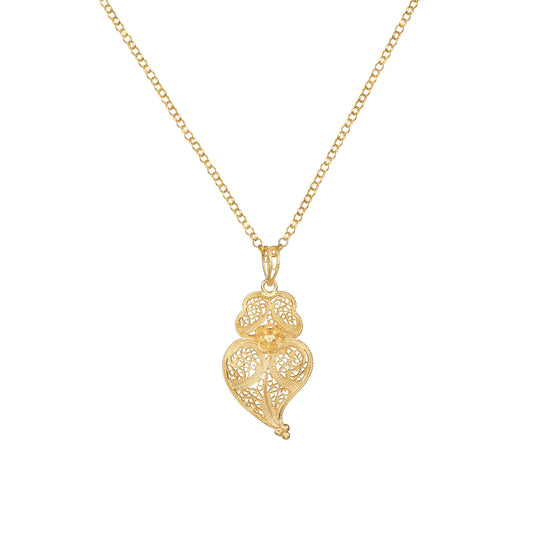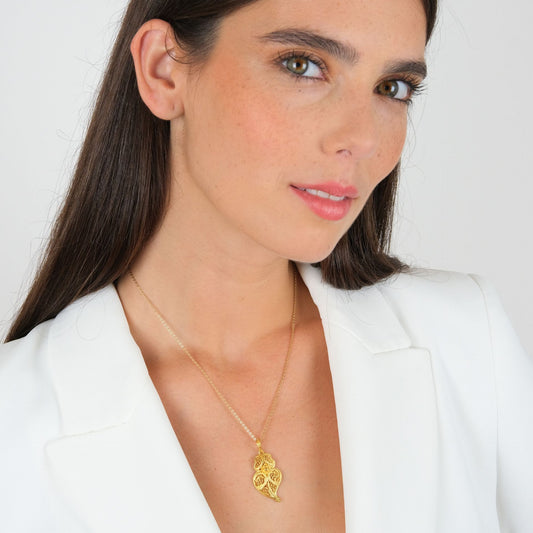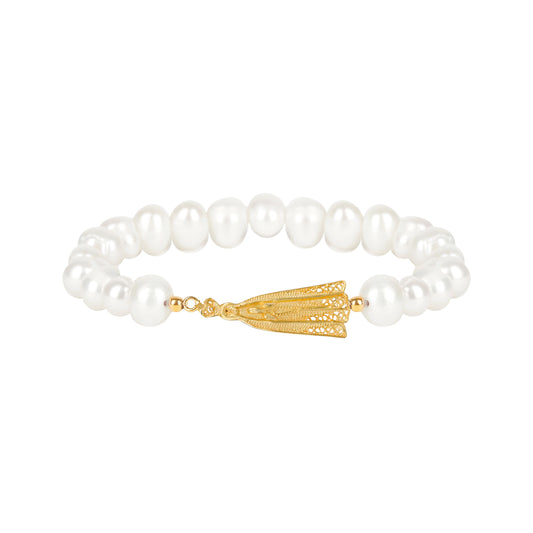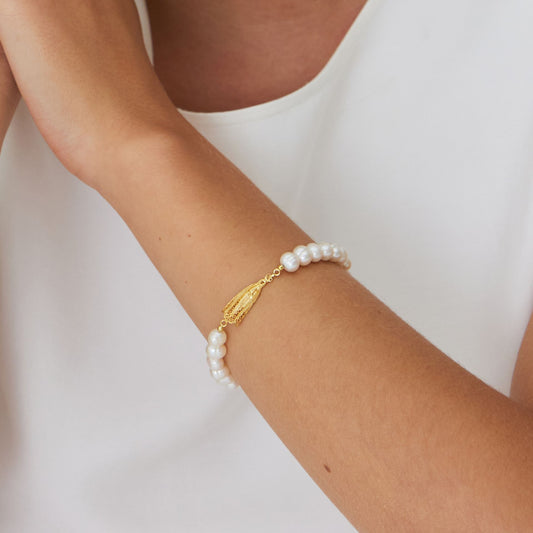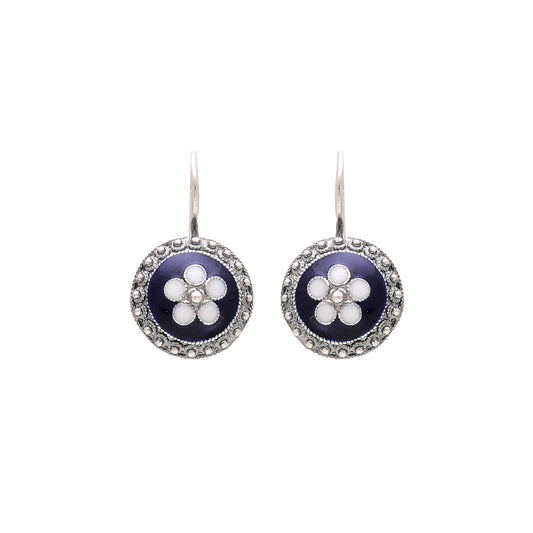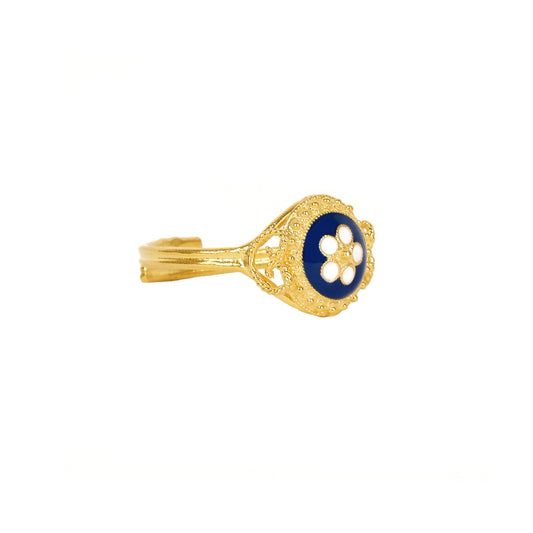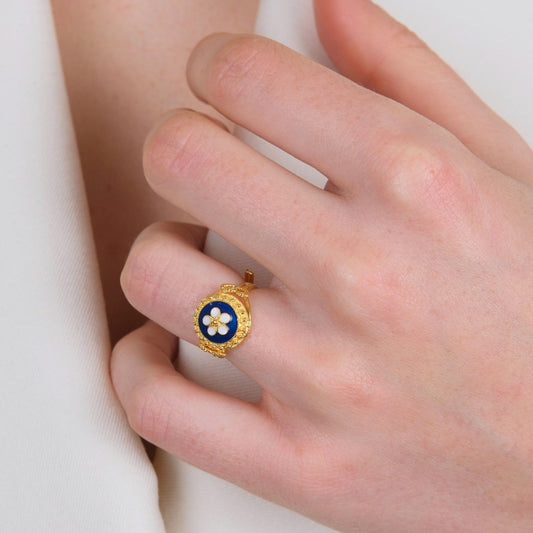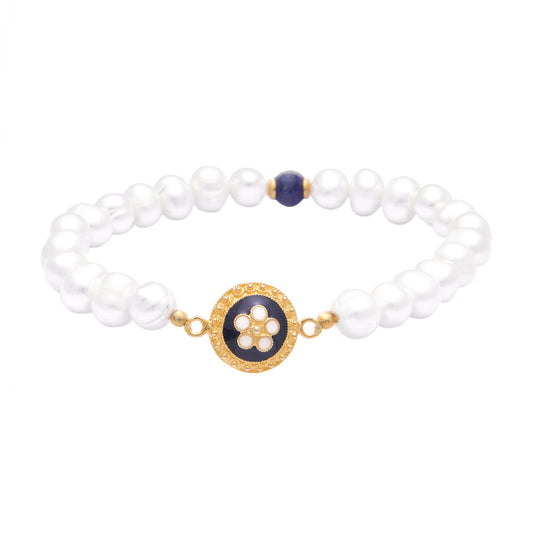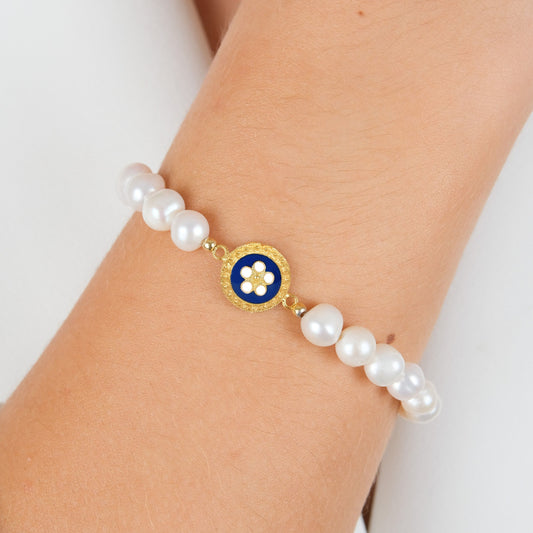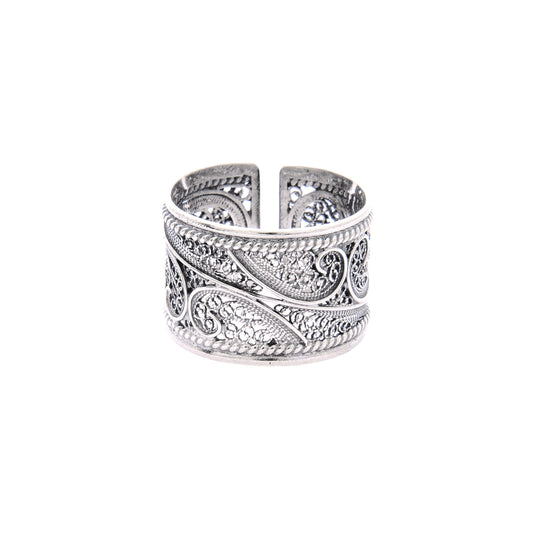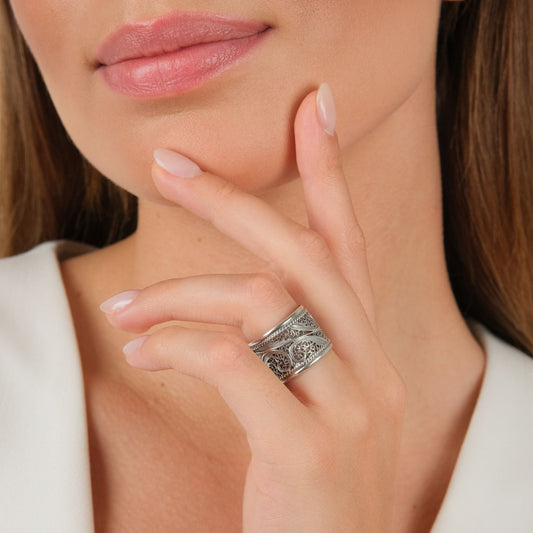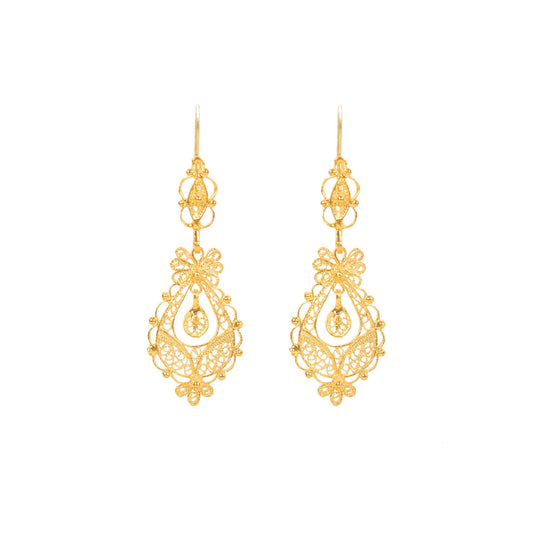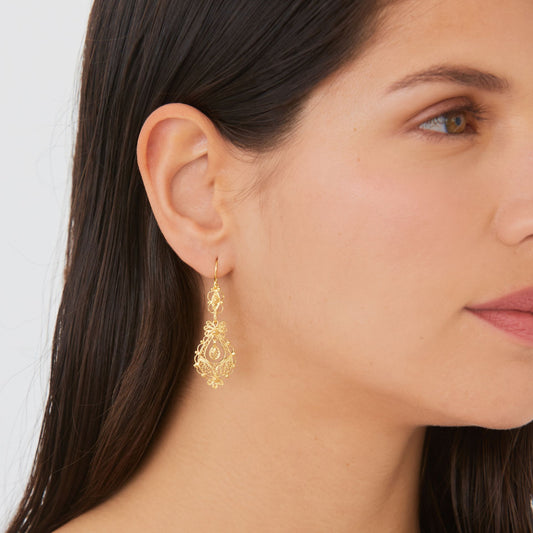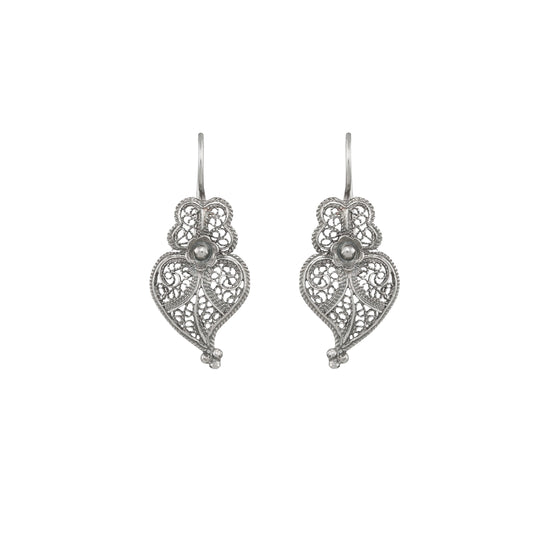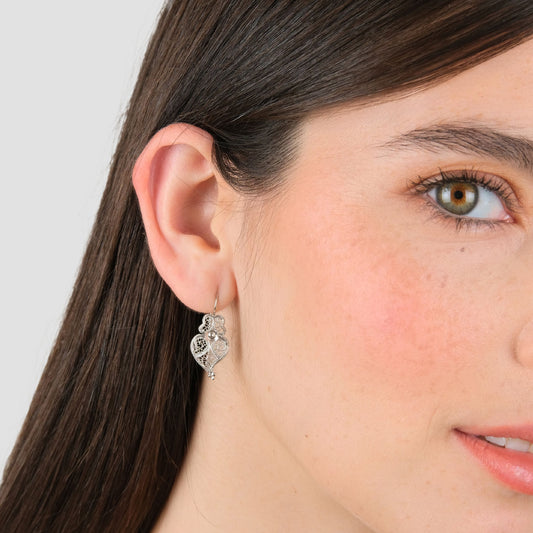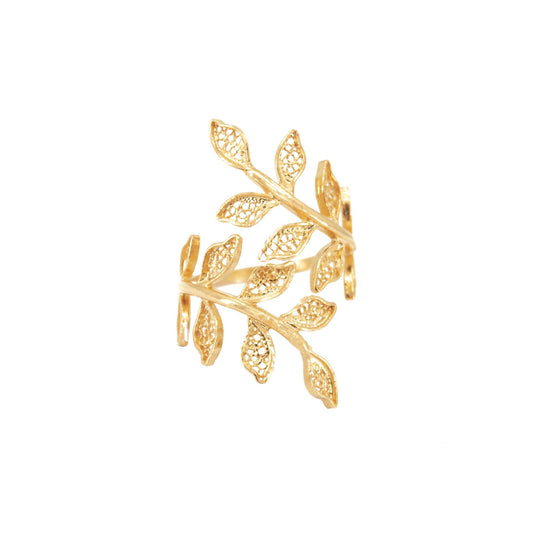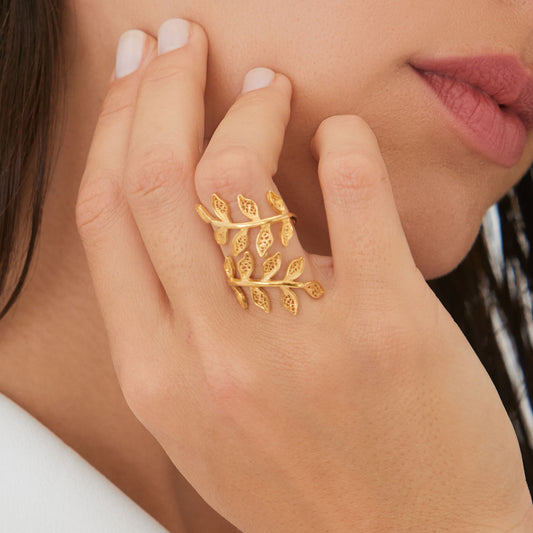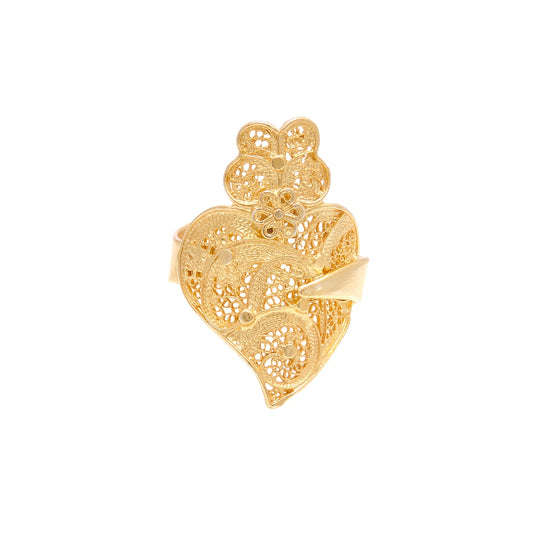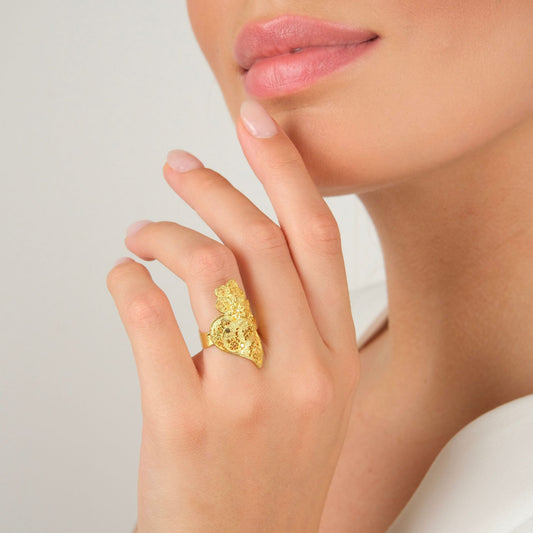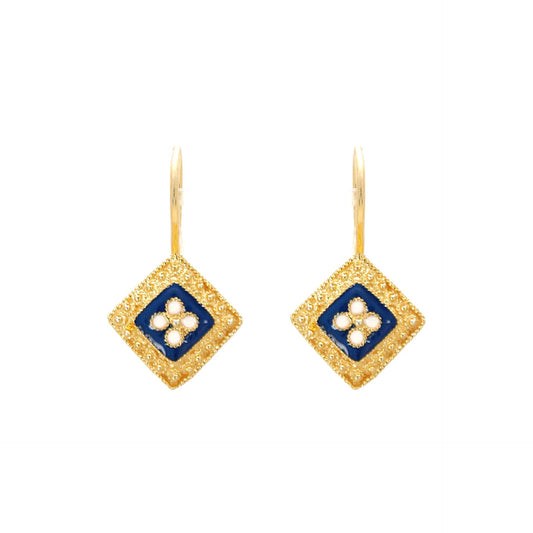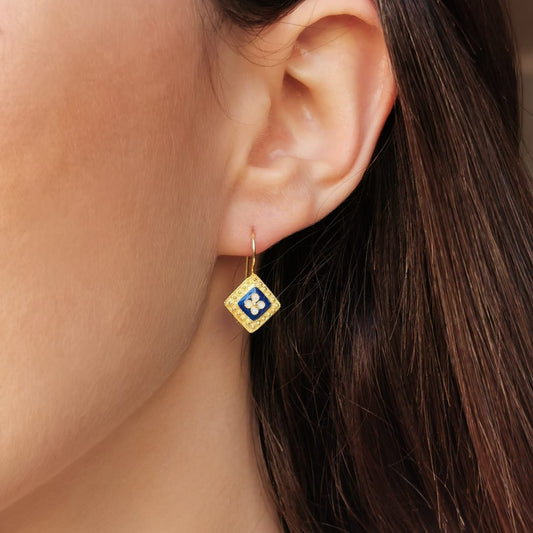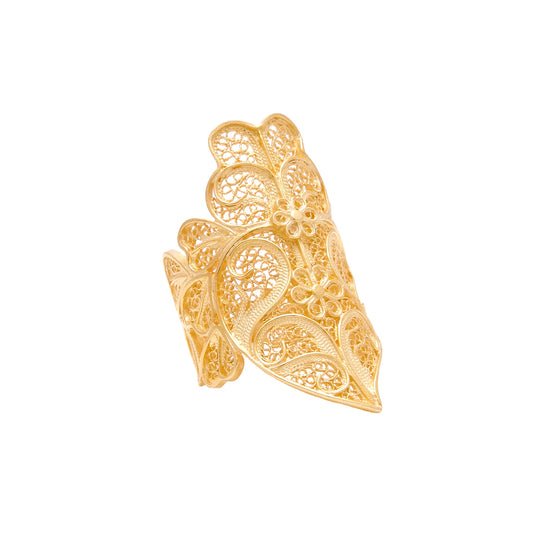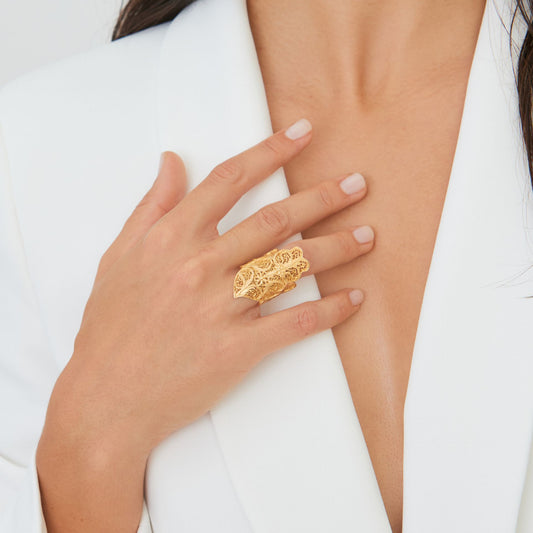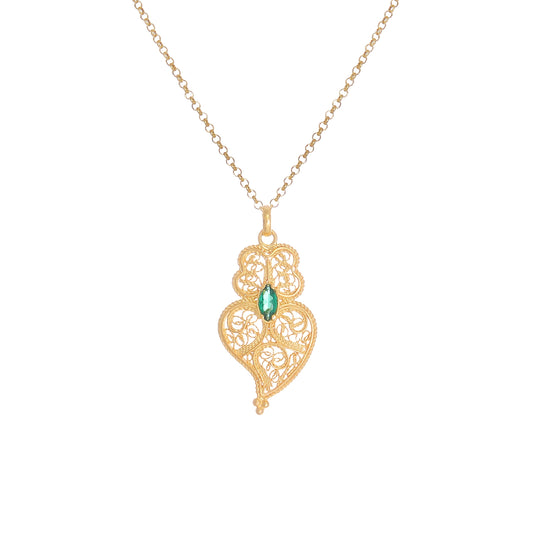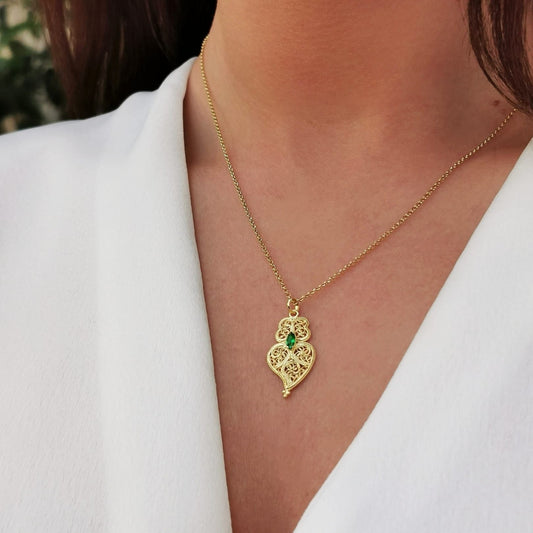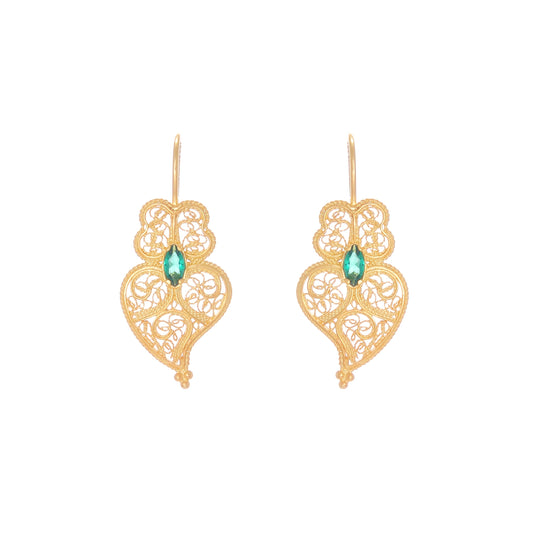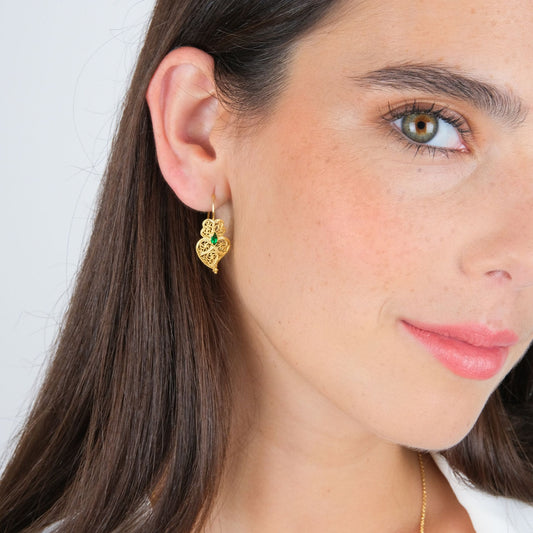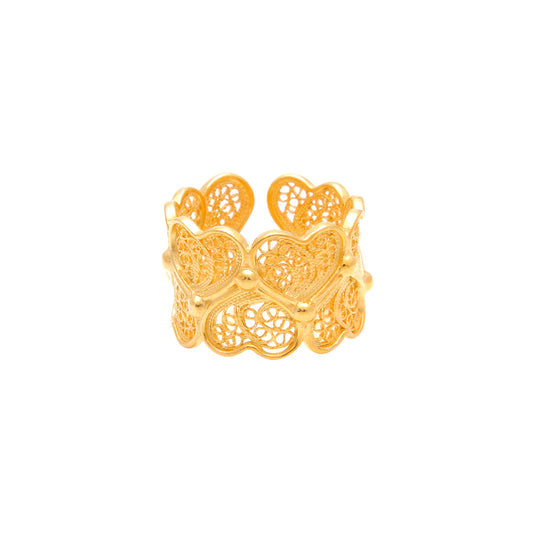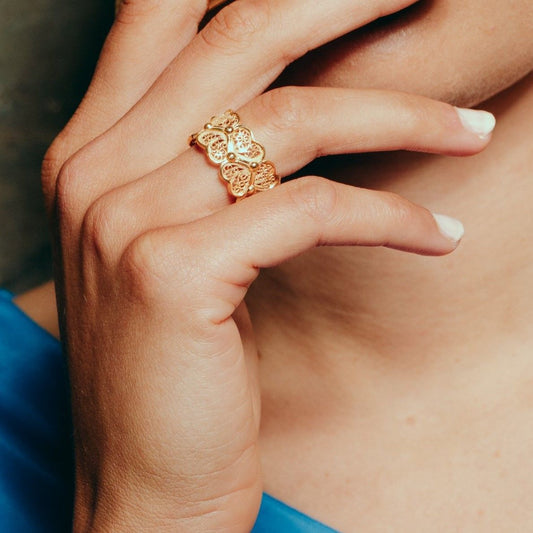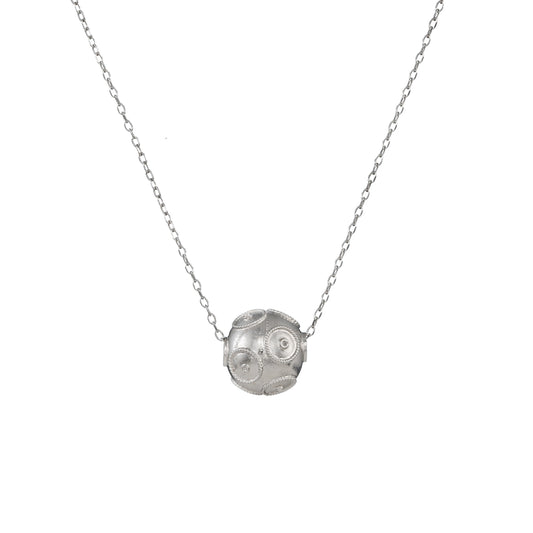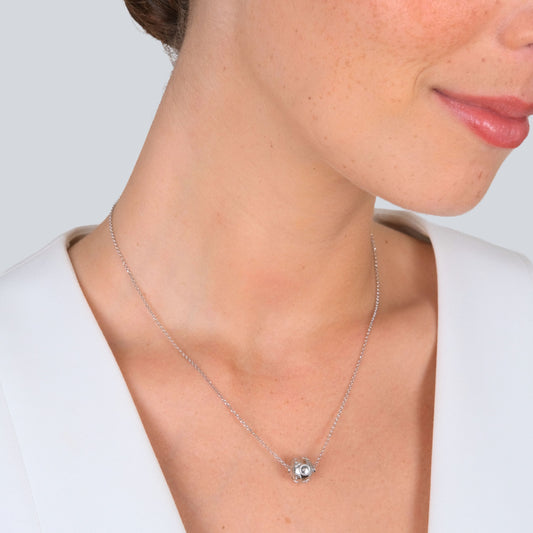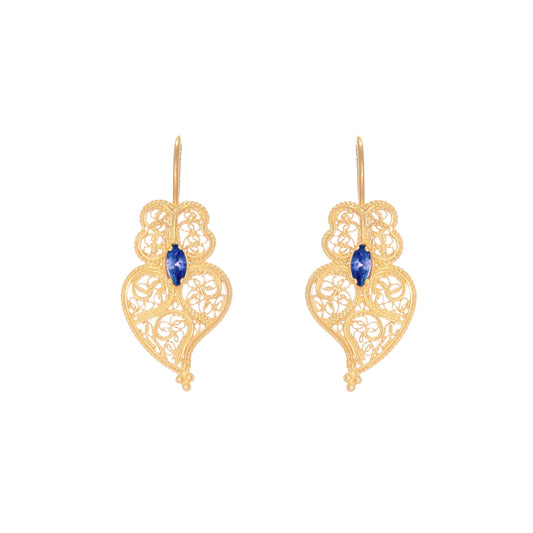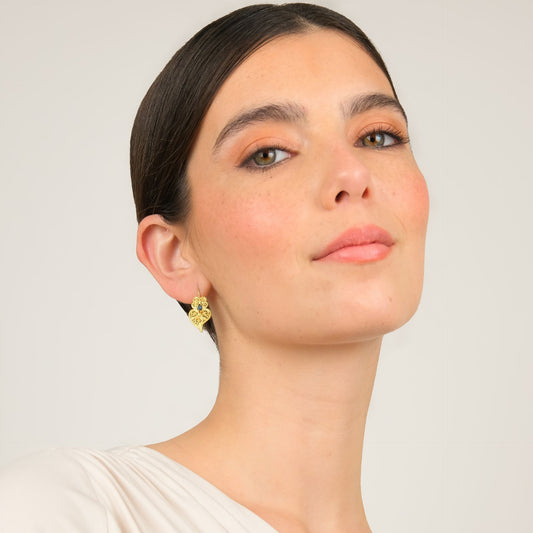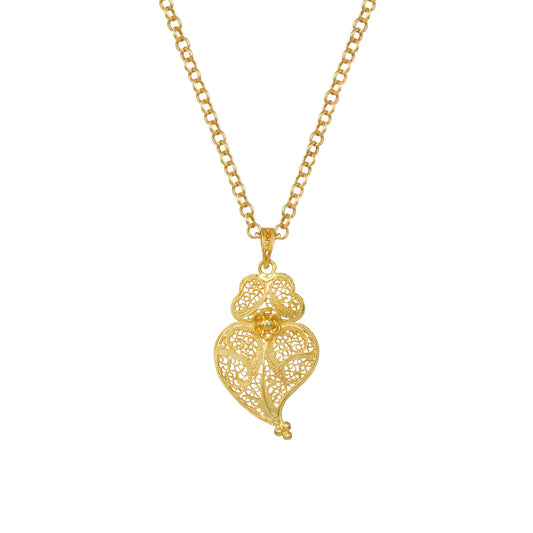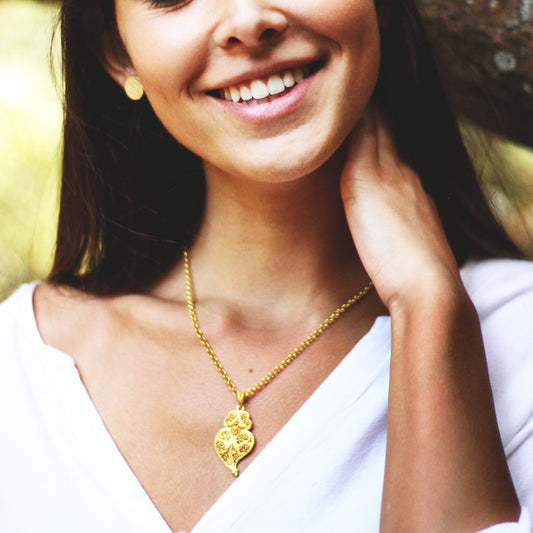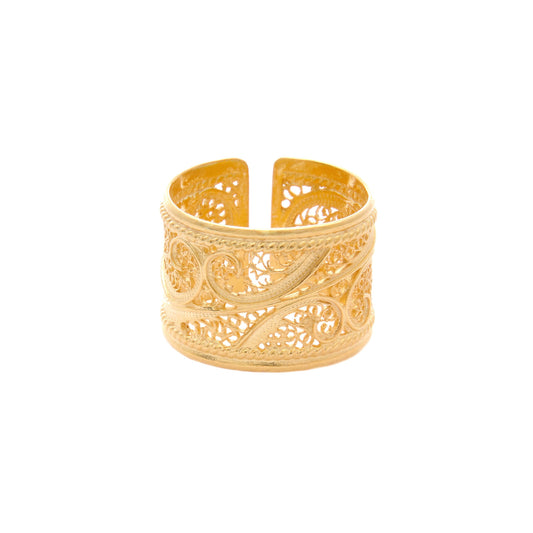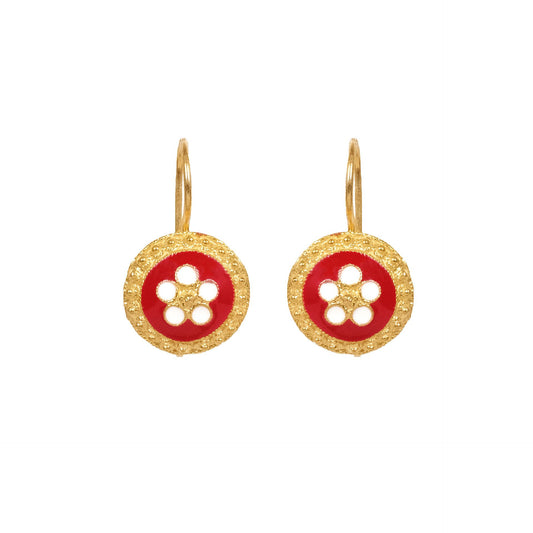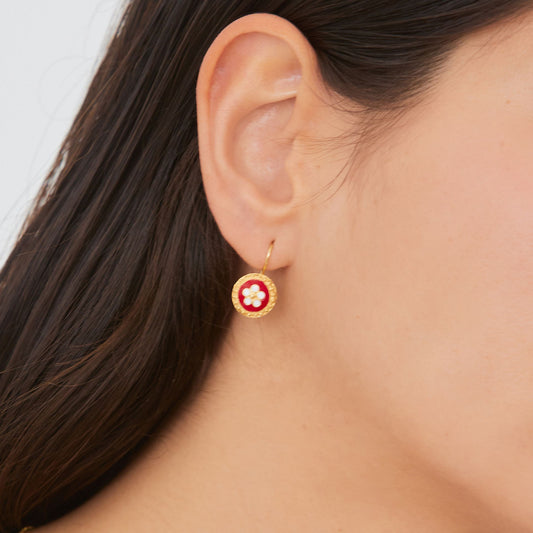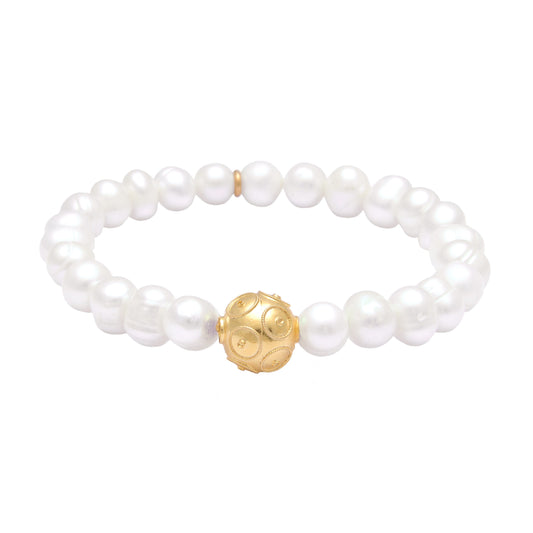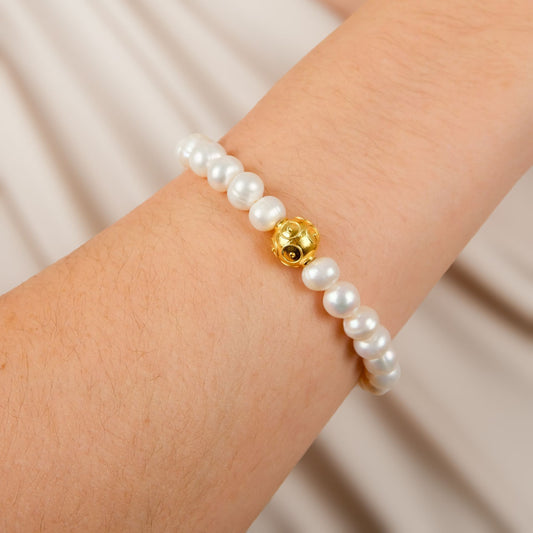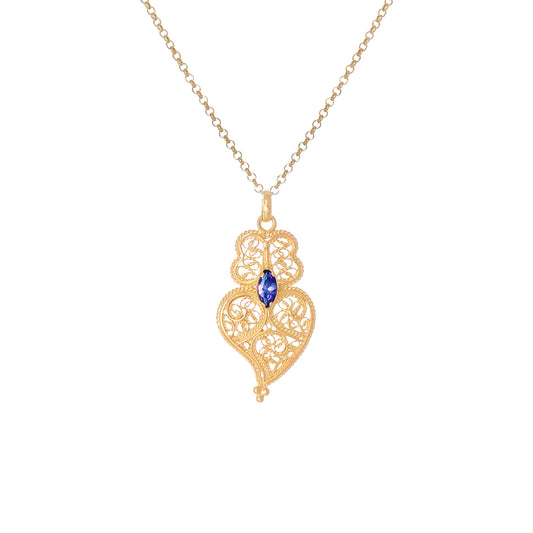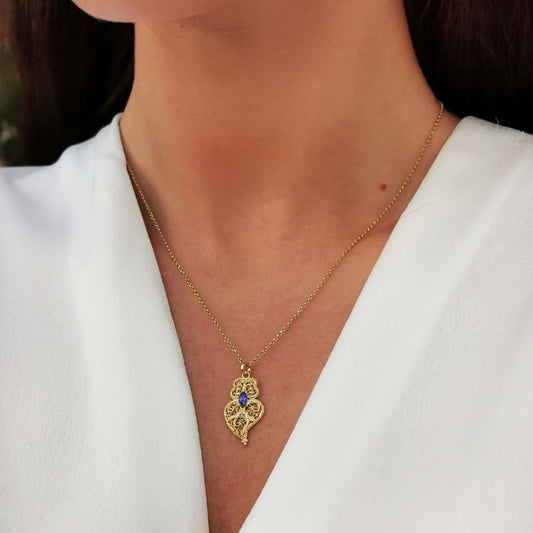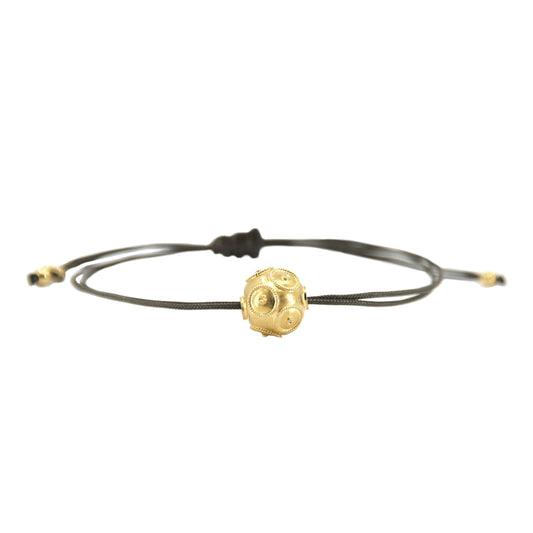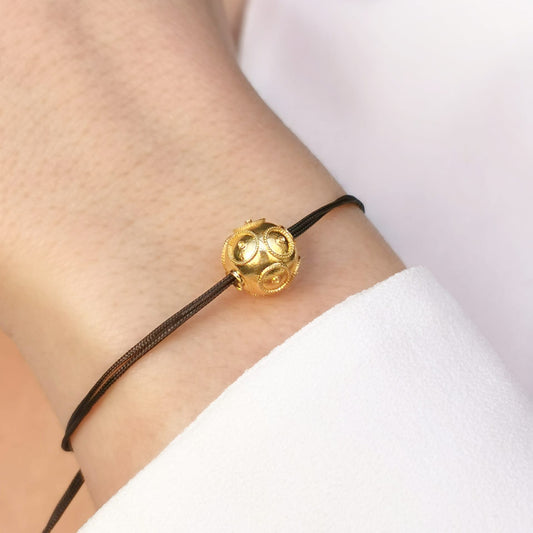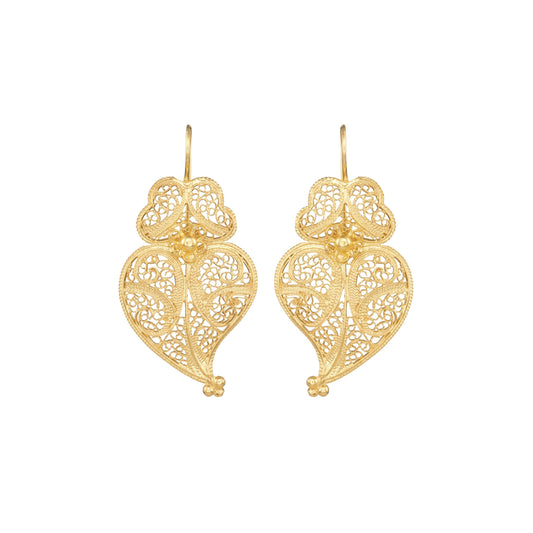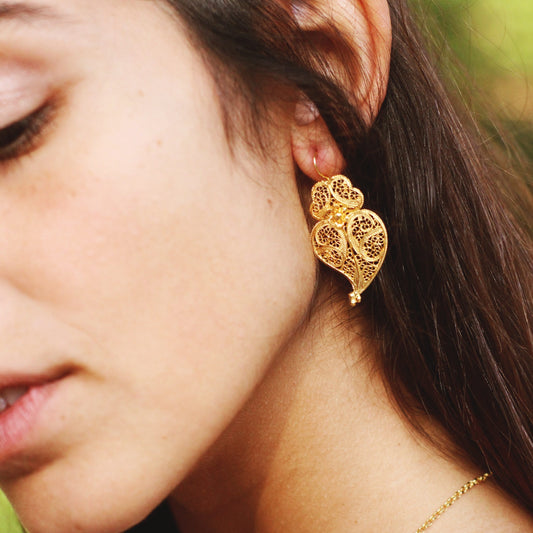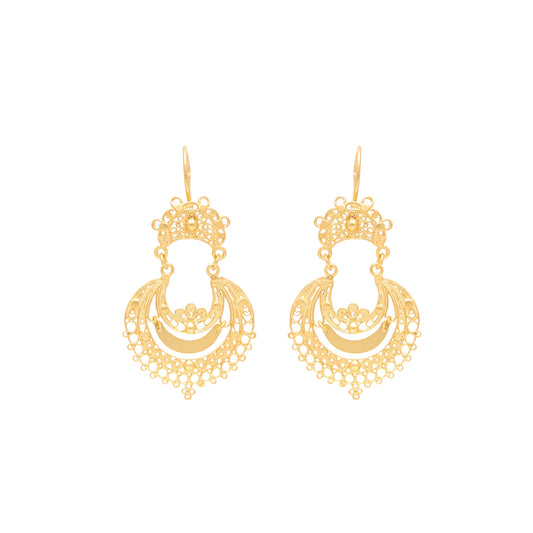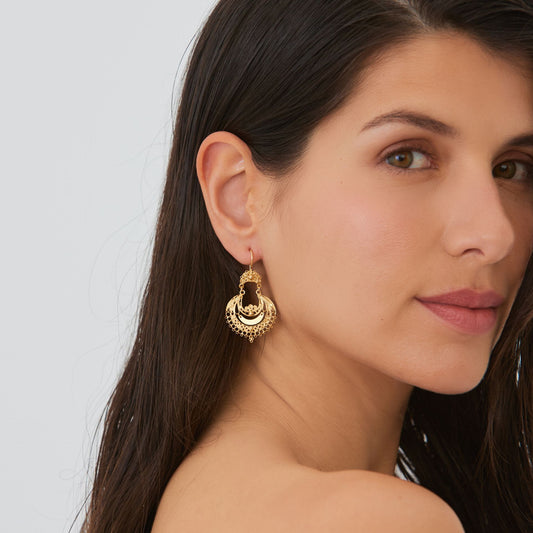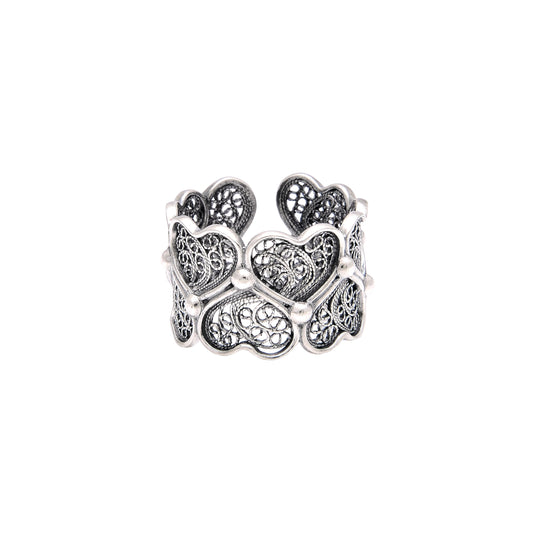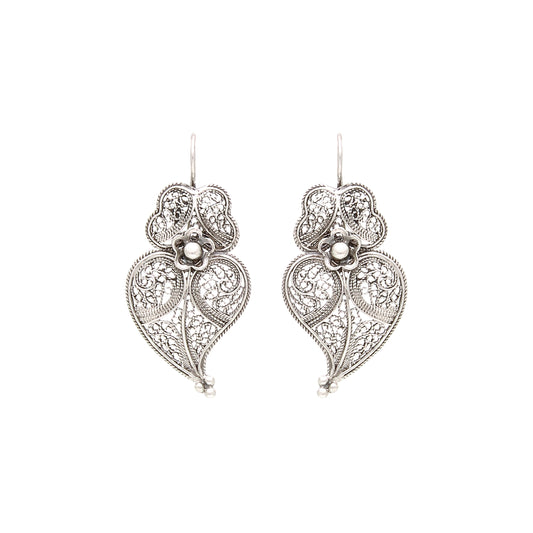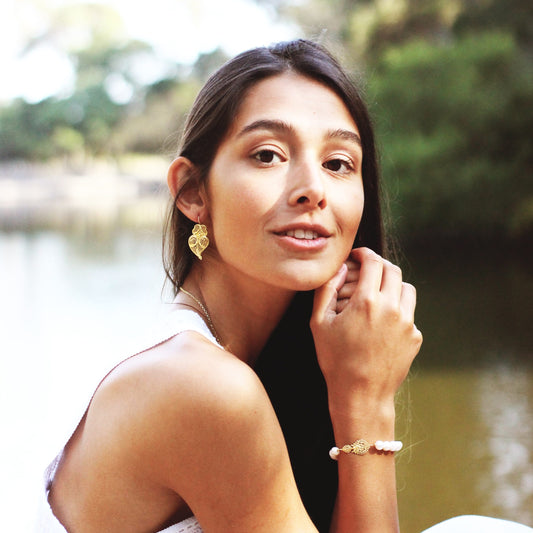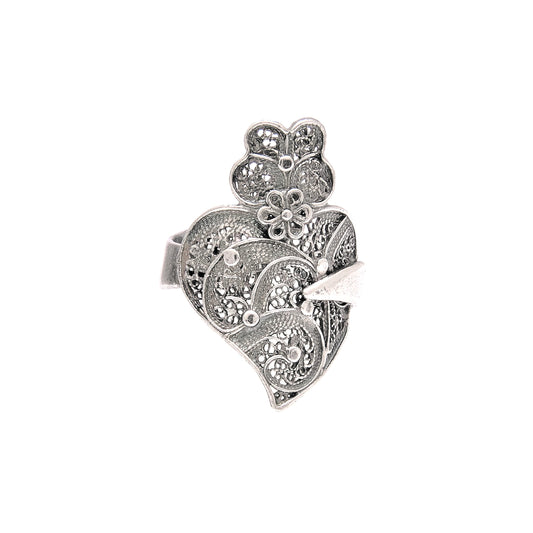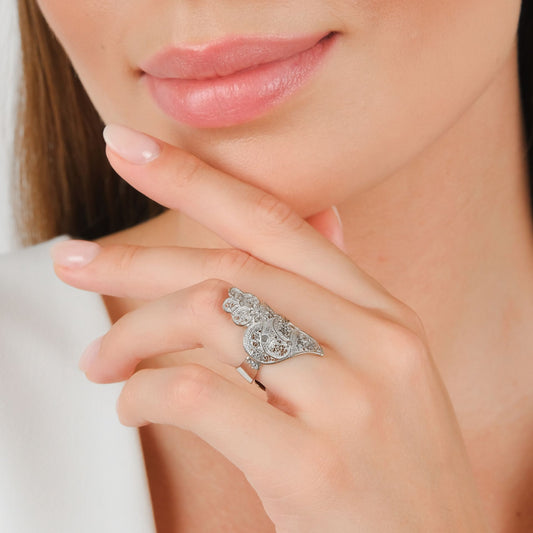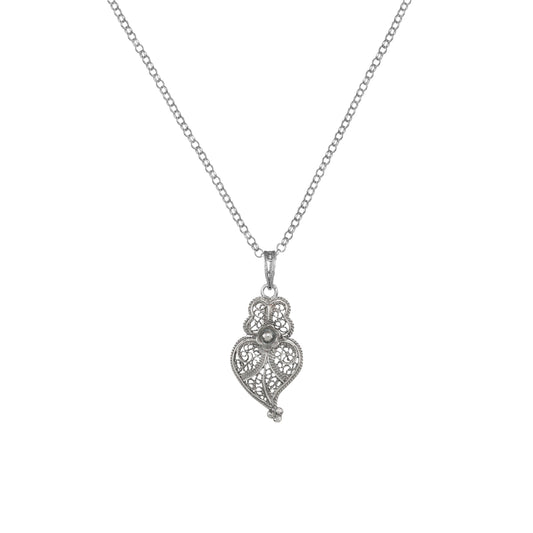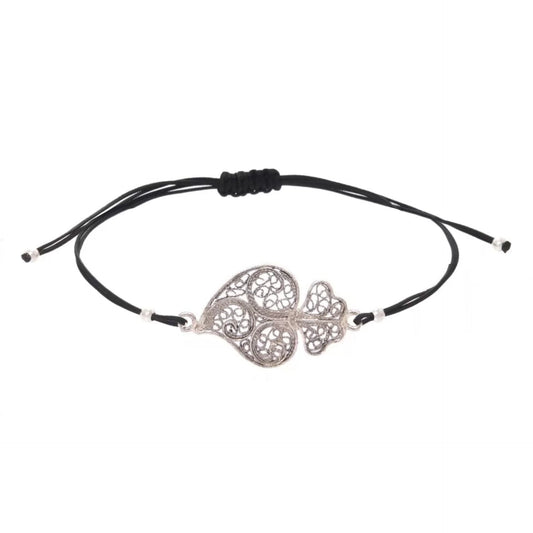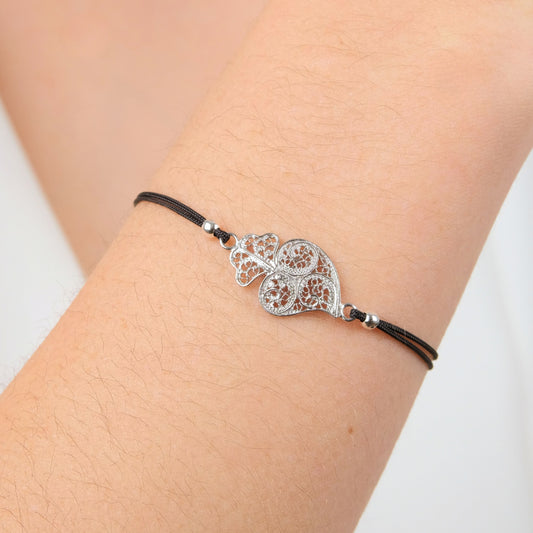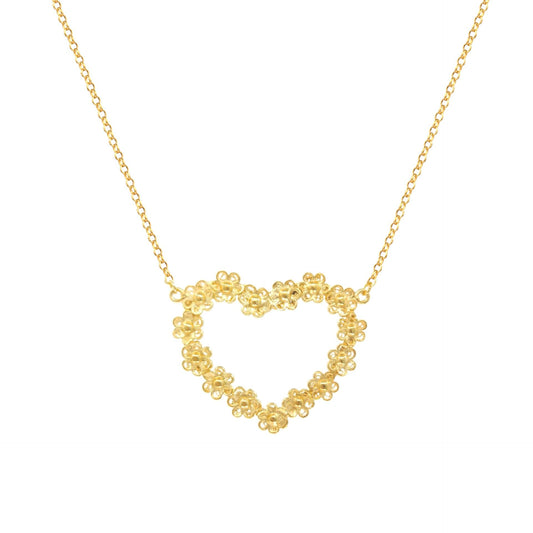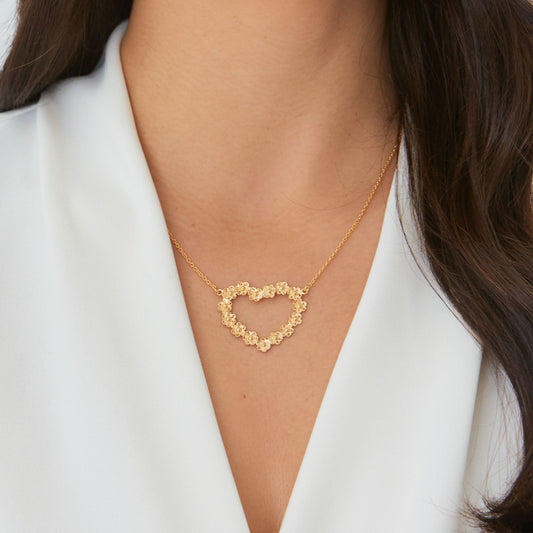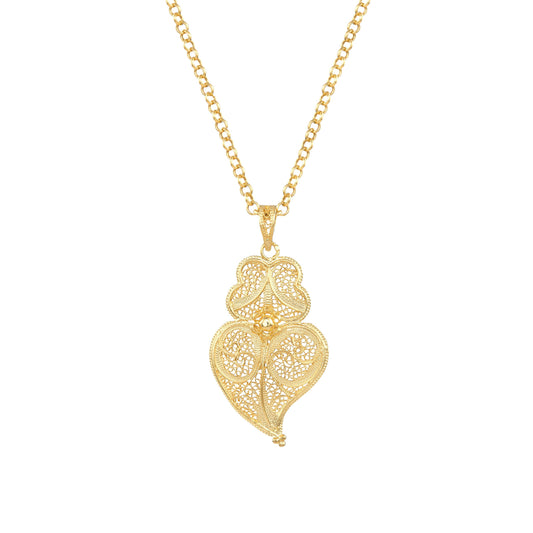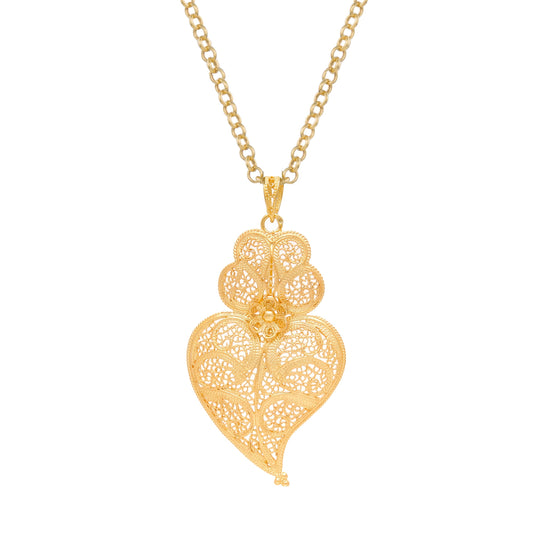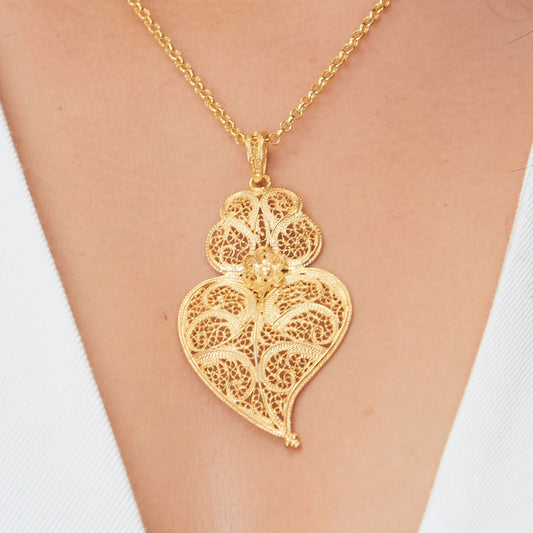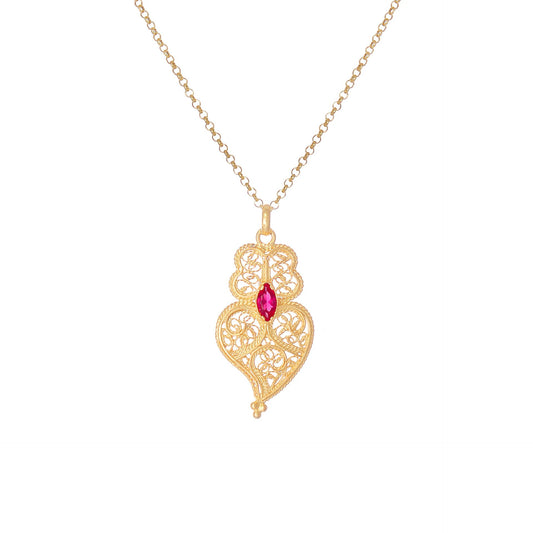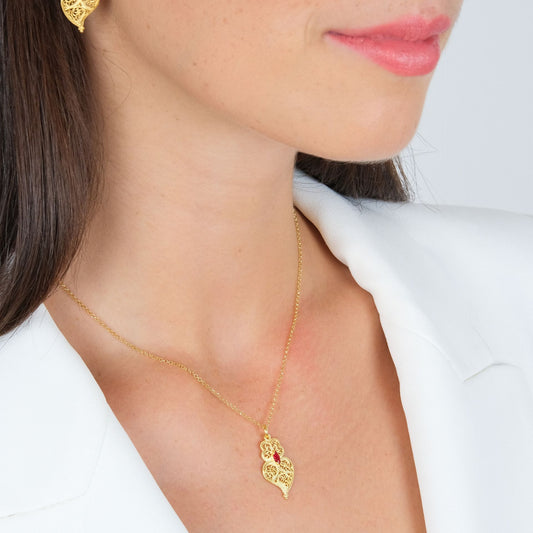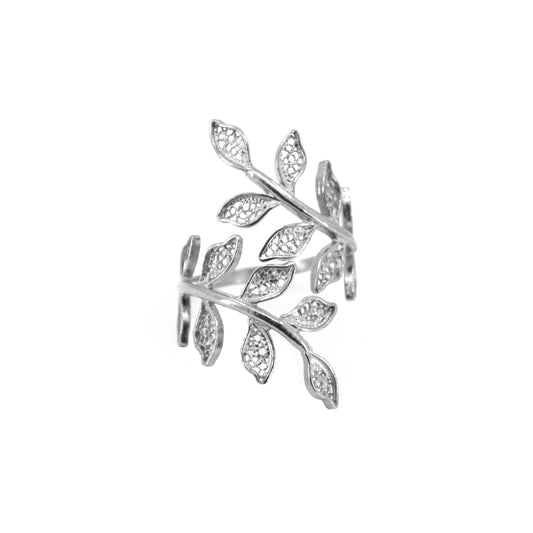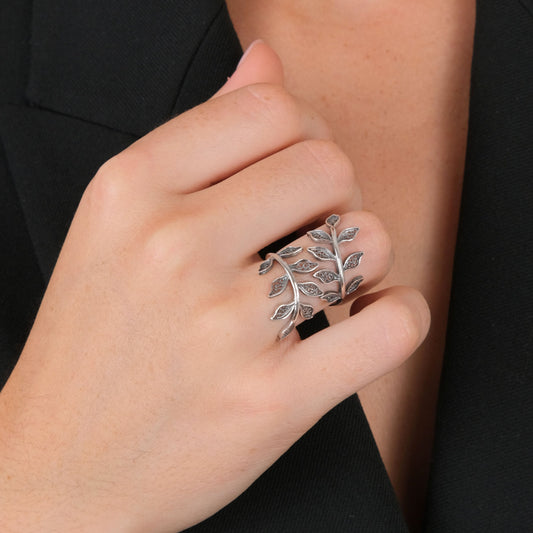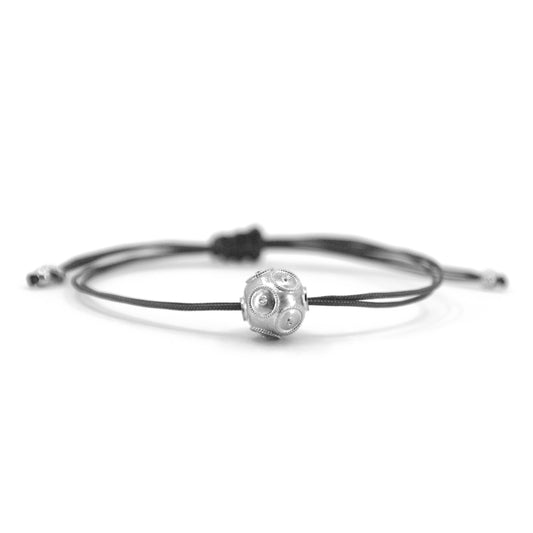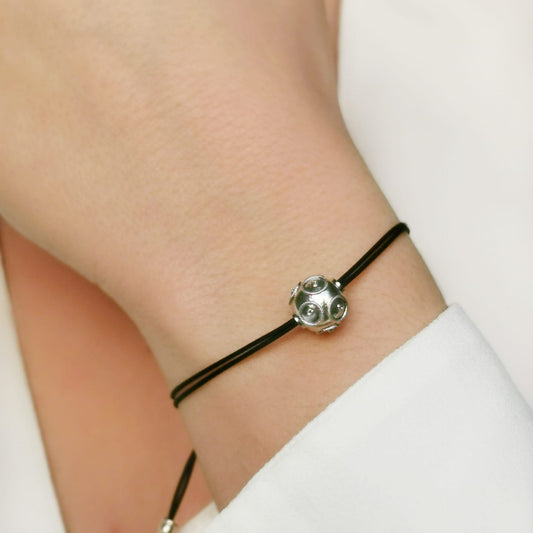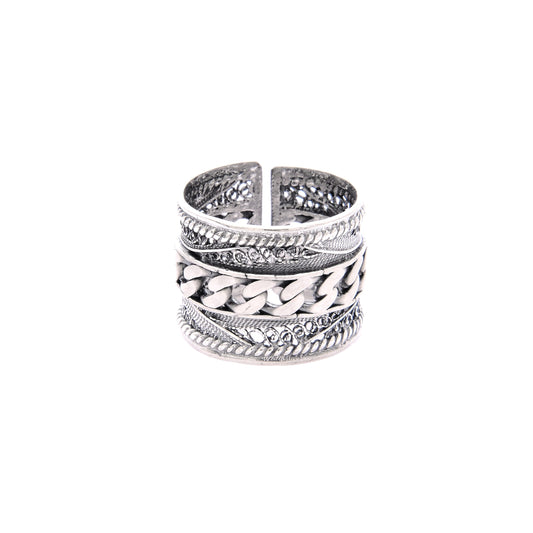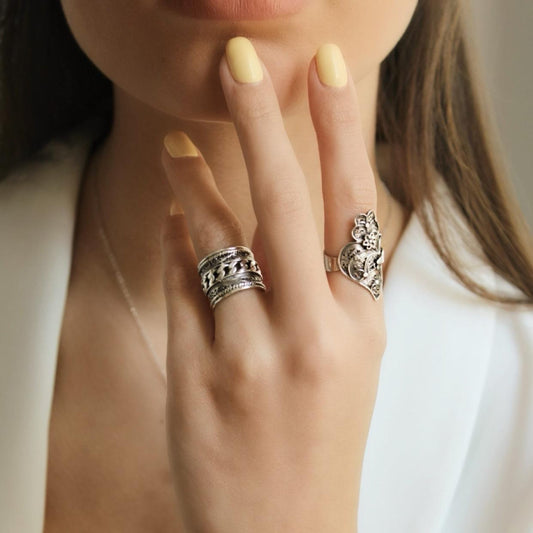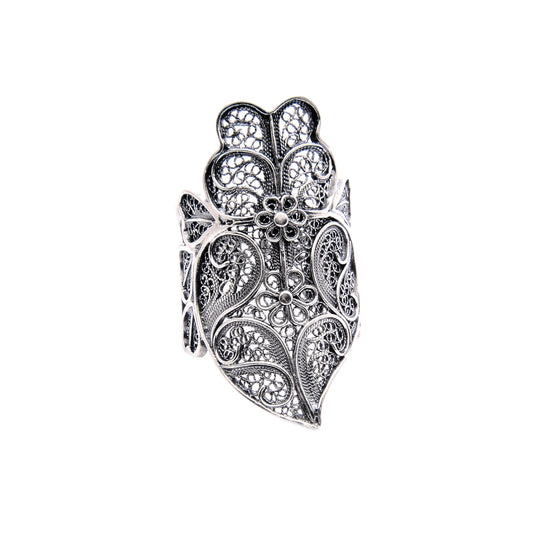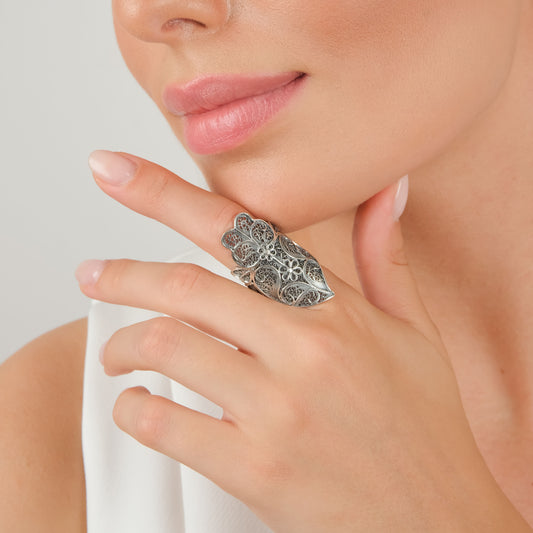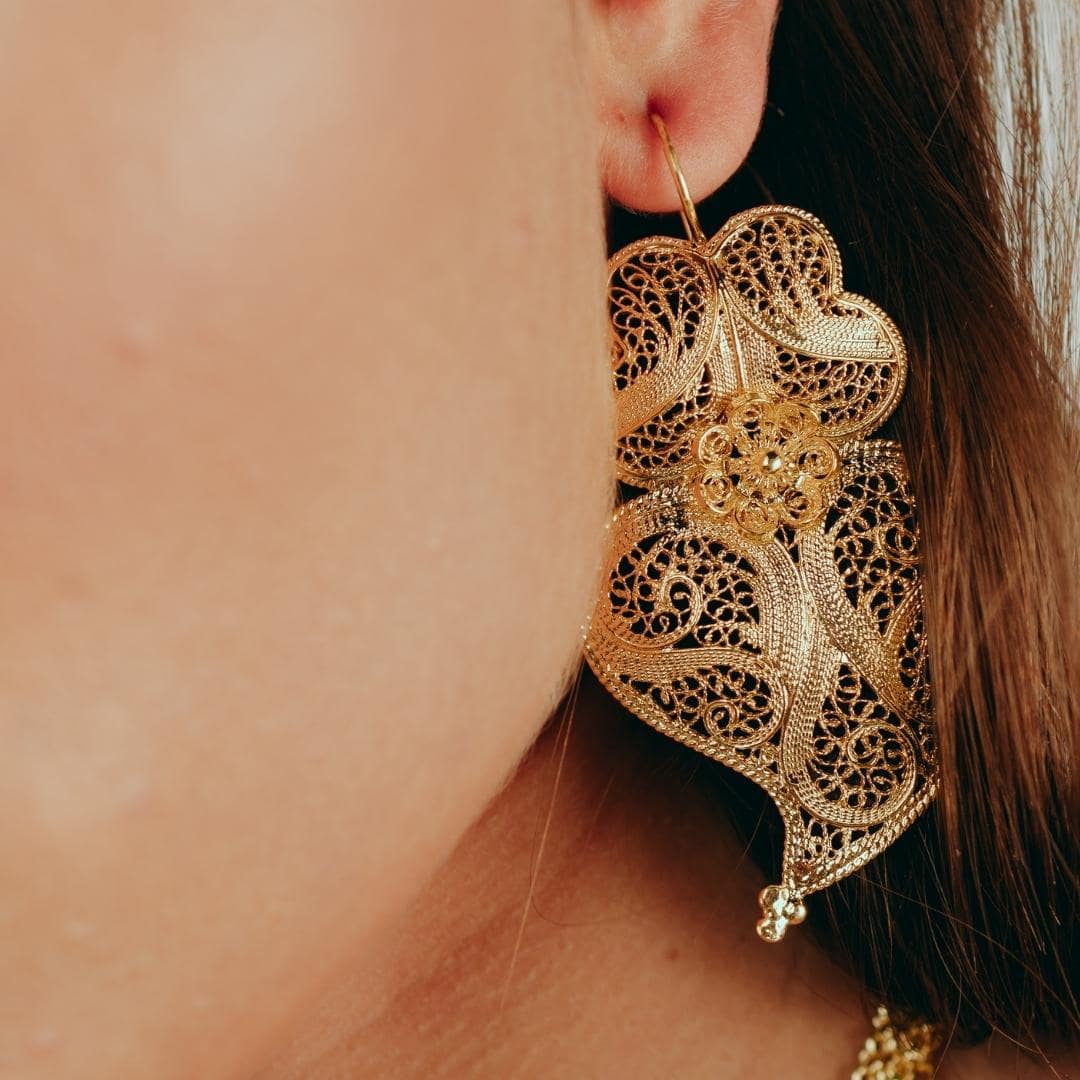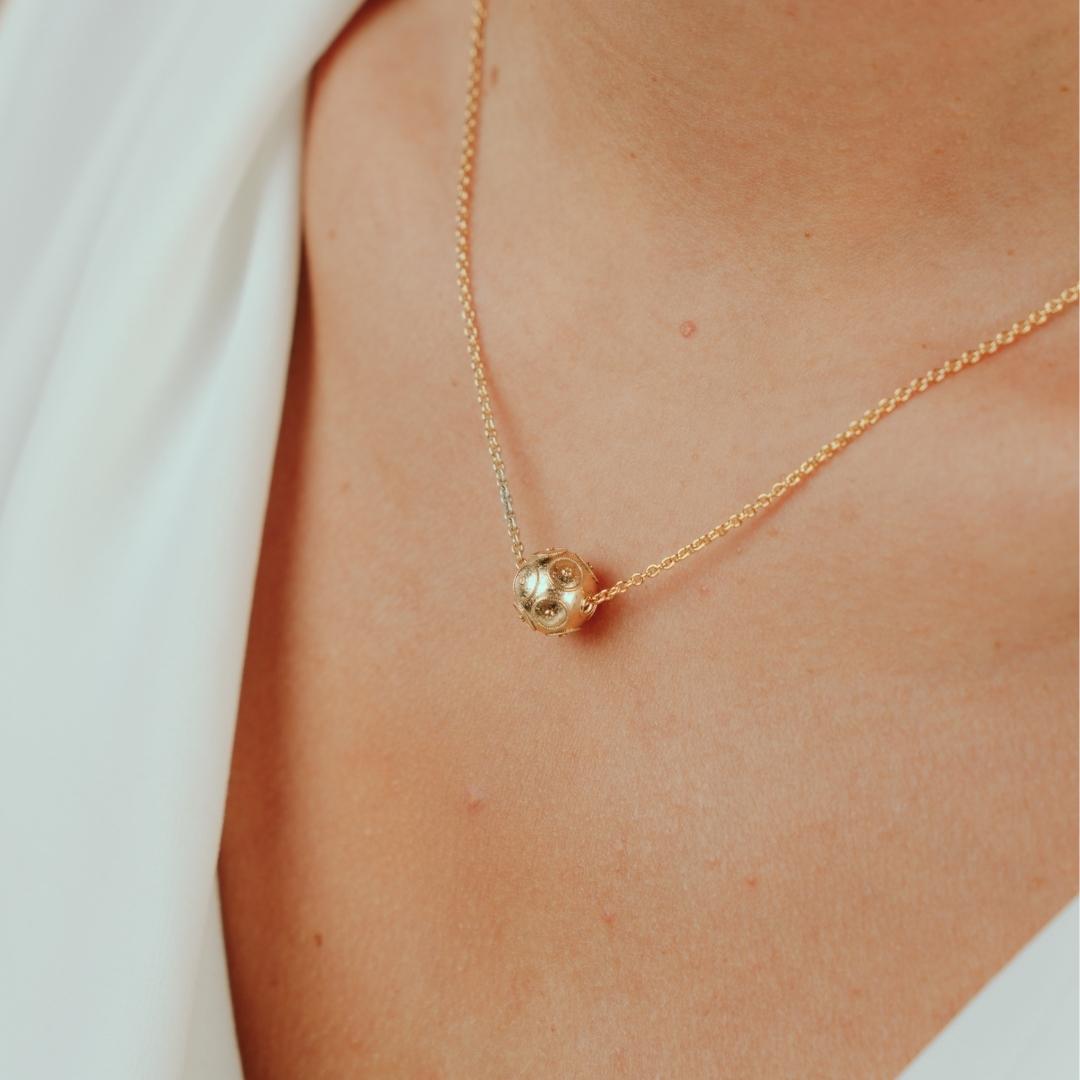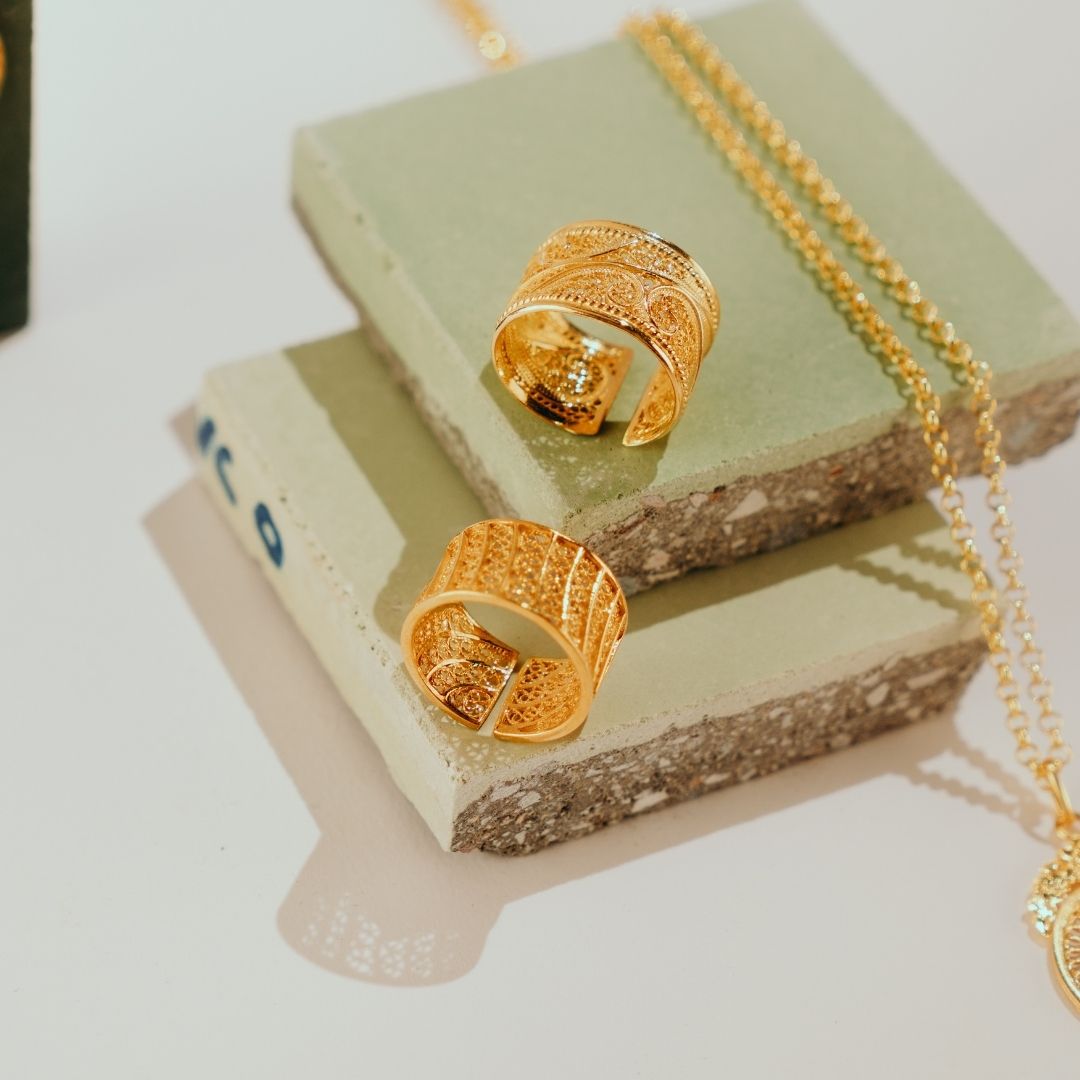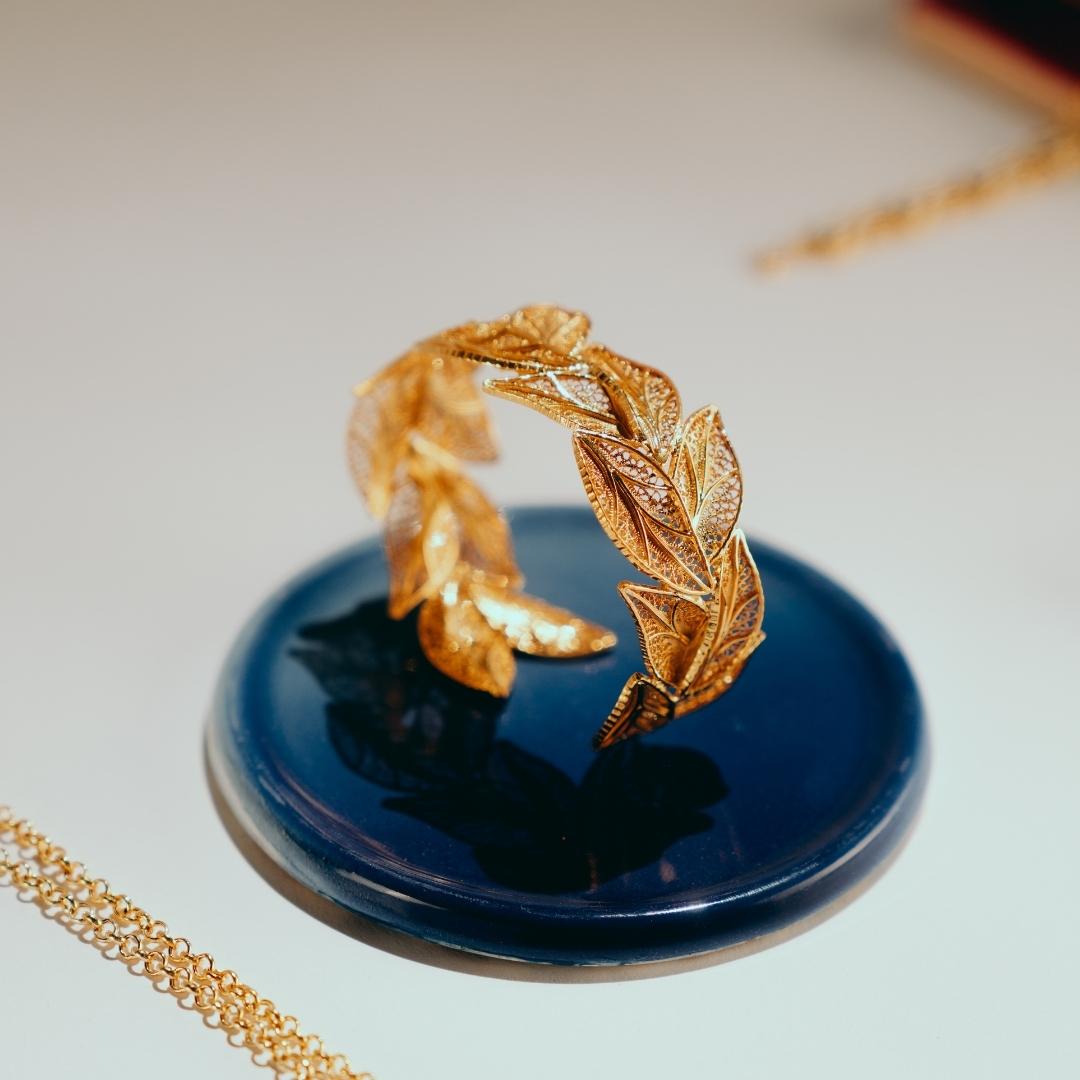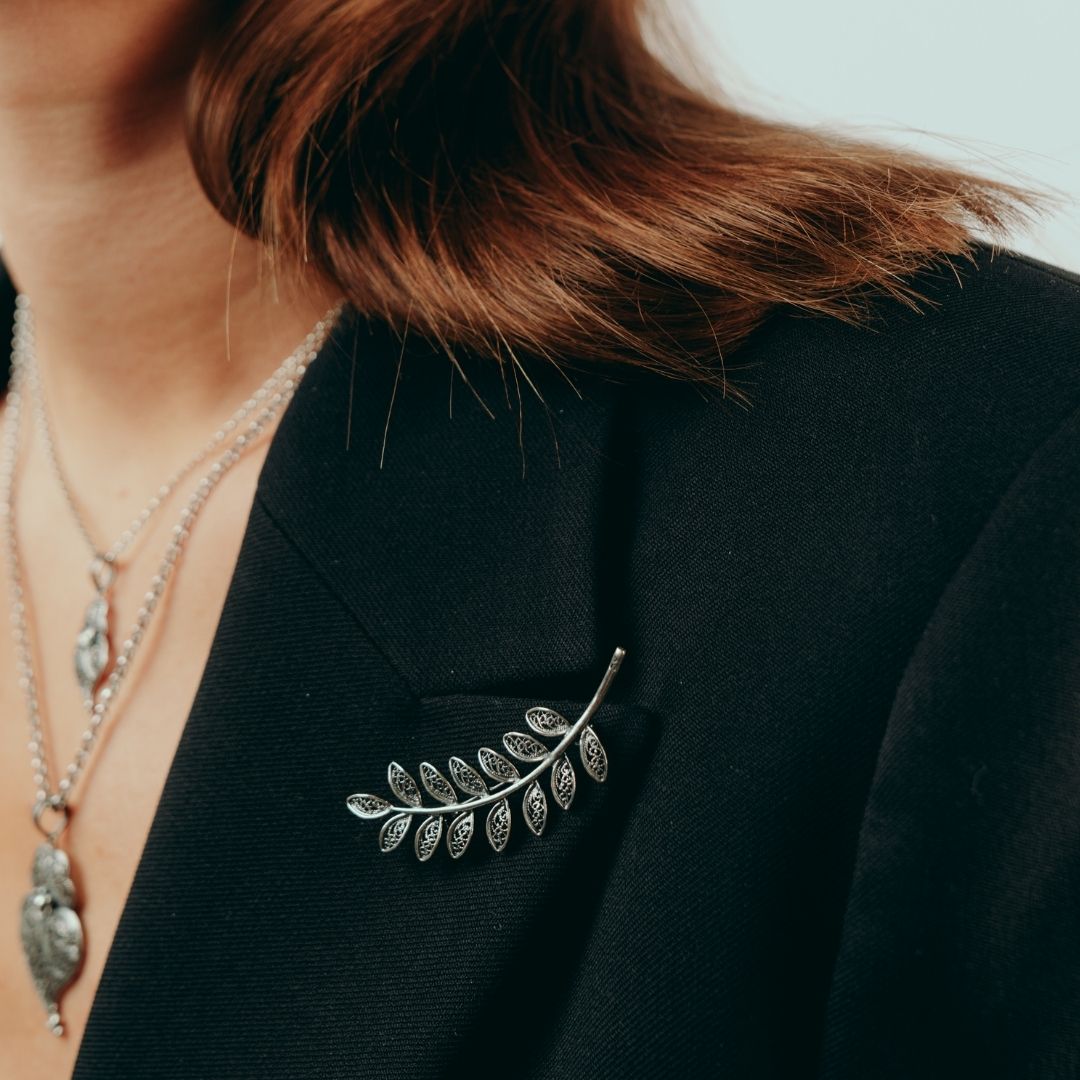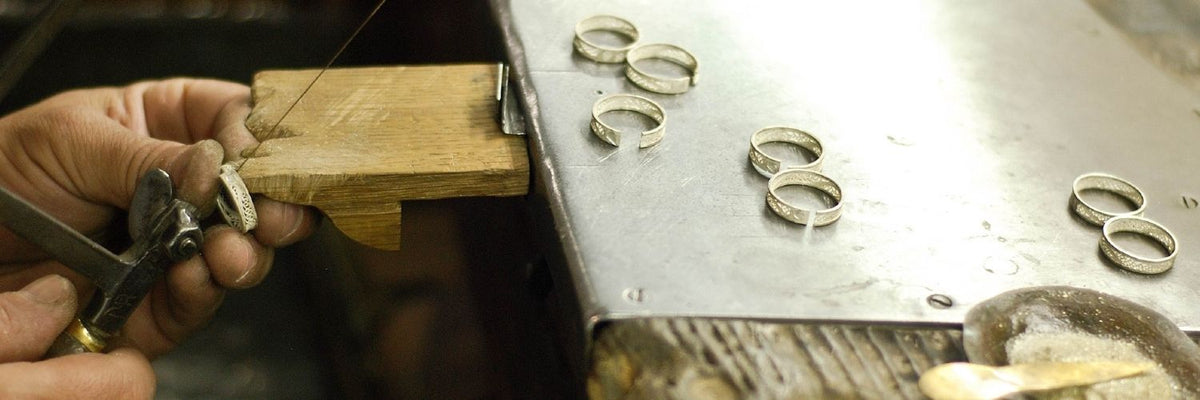

FILIGREE
Do you know the history of Portuguese filigree? Filigree is a manual art that requires extreme skill to work the very fine woven and soldered silver or gold threads that make up each piece, and is therefore internationally recognized for its quality.
Necklace Heart of Viana in Gold Plated Silver
Earrings Caramujo in Gold Plated Silver
Earrings Heart of Viana 2,5cm in Gold Plated Silver
Necklace Viana's Conta in Gold Plated Silver
Bracelet Heart of Viana in Gold Plated Silver with Pearls
Necklace Heart of Viana 2,5cm in Gold Plated Silver
Earrings Heart of Viana 3,5cm in Gold Plated Silver
Earrings Viana’s Conta in Gold Plated Silver
Necklace Heart of Viana in Silver
Bracelet Our Lady of Fátima in Gold Plated Silver with Cord
Bracelet Heart of Viana in Gold Plated Silver with Cord
Necklace Heart of Viana 3,5cm in Gold Plated Silver
Bracelet Our Lady of Fátima in Gold Plated Silver with Pearls
Ring Caramujo in Gold Plated Silver
Bracelet Caramujo in Gold Plated Silver
Earrings Princess in Gold Plated Silver
Earrings Heart of Viana 2,5cm in Silver
Ring Heart of Viana in Gold Plated Silver
Earrings Rhomb Caramujo in Gold Plated Silver
Ring Heart of Viana XL in Gold Plated Silver
Necklace Heart of Viana Green in Gold Plated Silver
Earrings Heart of Viana Green in Gold Plated Silver
Ring Hearts in Gold Plated Silver
Earrings Heart of Viana Blue in Gold Plated Silver
Necklace Heart of Viana 4,0 cm in Gold Plated Silver
Ring Filigree in Gold Plated Silver
Earrings Red Caramujo in Gold Plated Silver
Bracelet Viana's Conta in Gold Plated Silver with Pearls
Necklace Heart of Viana Blue in Gold Plated Silver
Bracelet Viana's Conta in Gold Plated Silver with Cord
Earrings Heart of Viana 4,0cm in Gold Plated Silver
Earrings Arrecadas in Gold Plated Silver
Earrings Heart of Viana XS in Gold Plated Silver
Earrings Heart of Viana 3,5cm in Silver
Necklace Heart of Viana 2,5cm in Silver
Bracelet Heart of Viana in Silver with Cord
Necklace Heart of Flowers in Gold Plated Silver
Necklace Heart of Viana 4,5 cm in Gold Plated Silver
Necklace Heart of Viana 5,5cm in Gold Plated Silver
Necklace Heart of Viana Red in Gold Plated Silver
Bracelet Viana's Conta in Silver with Cord
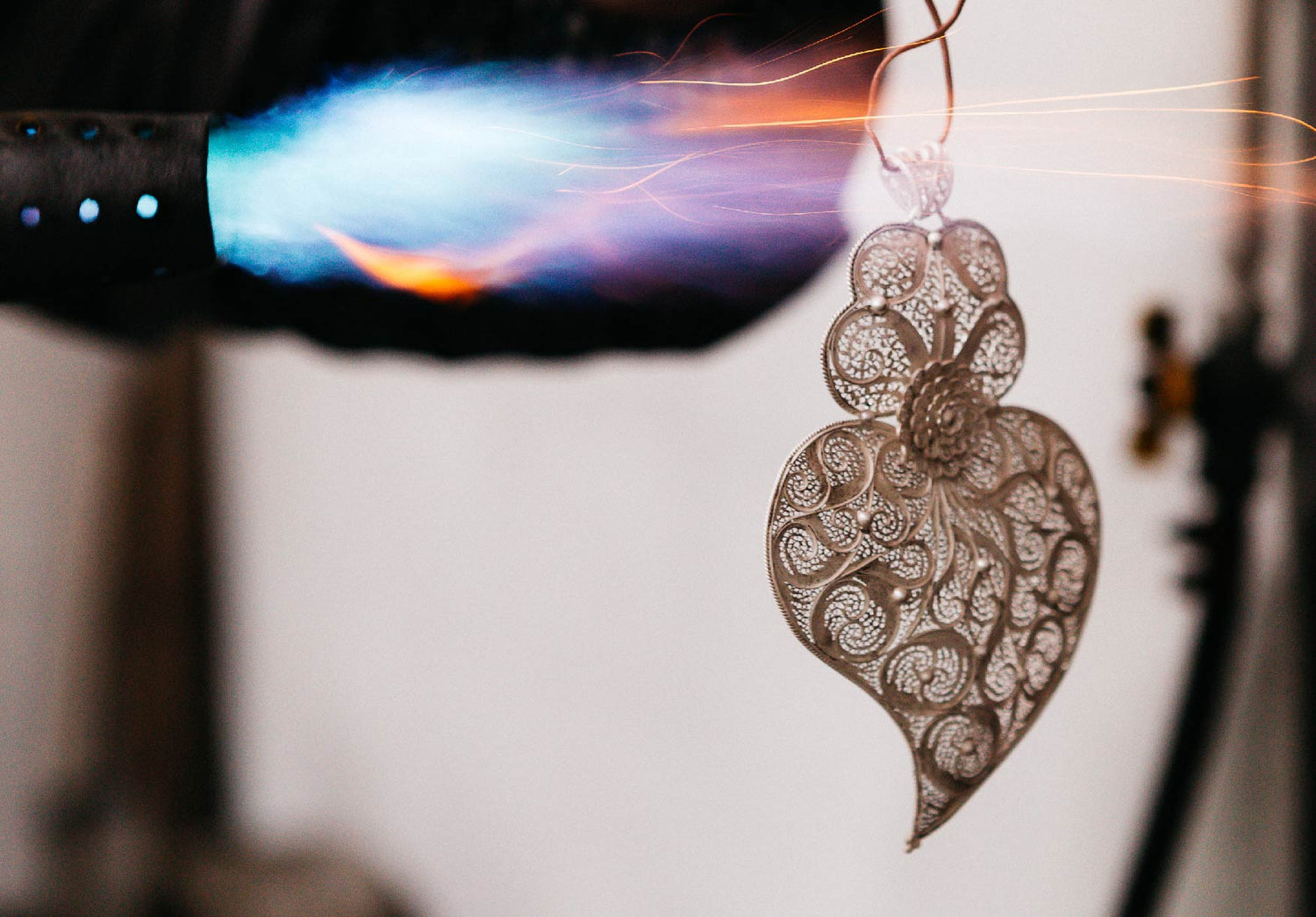
HISTORY OF FILIGREE
Its exact origin is unknown, but from the existing facts we can say that it is an ancient technique known in many of the civilizations of the ancient world.
In Portugal, examples of this technique have been found dating back to around 2000 BC, with Phoenician origins, but filigree jewelry produced in national territory appears during the Muslim rule of the Peninsula, around the 8th century AD.
THE ART OF DETAILS
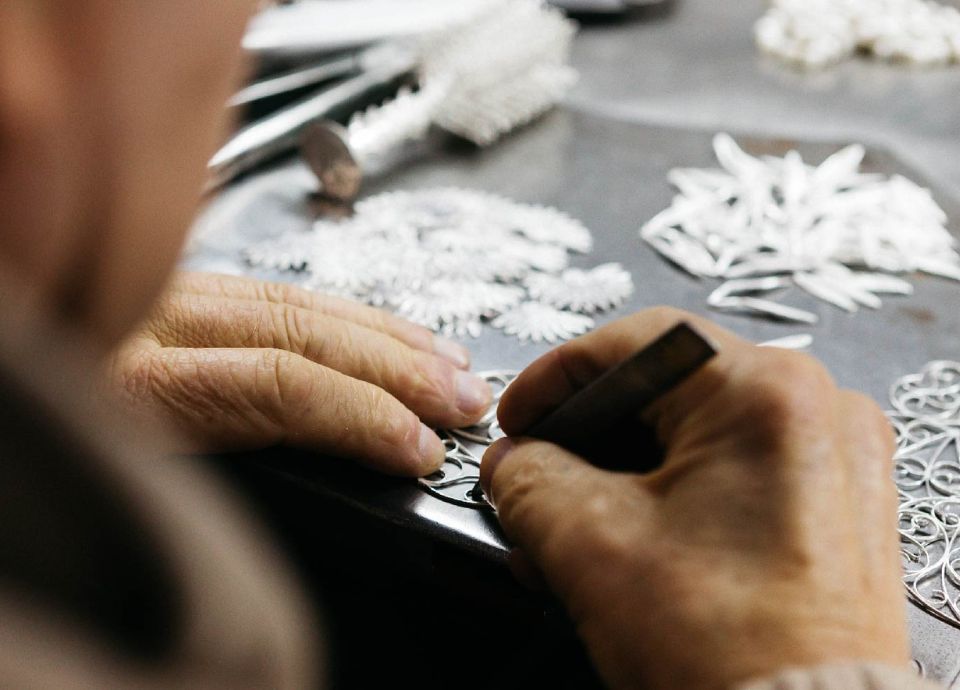
This technique consists in molding the metal into very fine threads, mainly gold alloy, although we can find filigree pieces worked in silver, with a maximum thickness of 0.22mm, twisted two by two and then flattened.
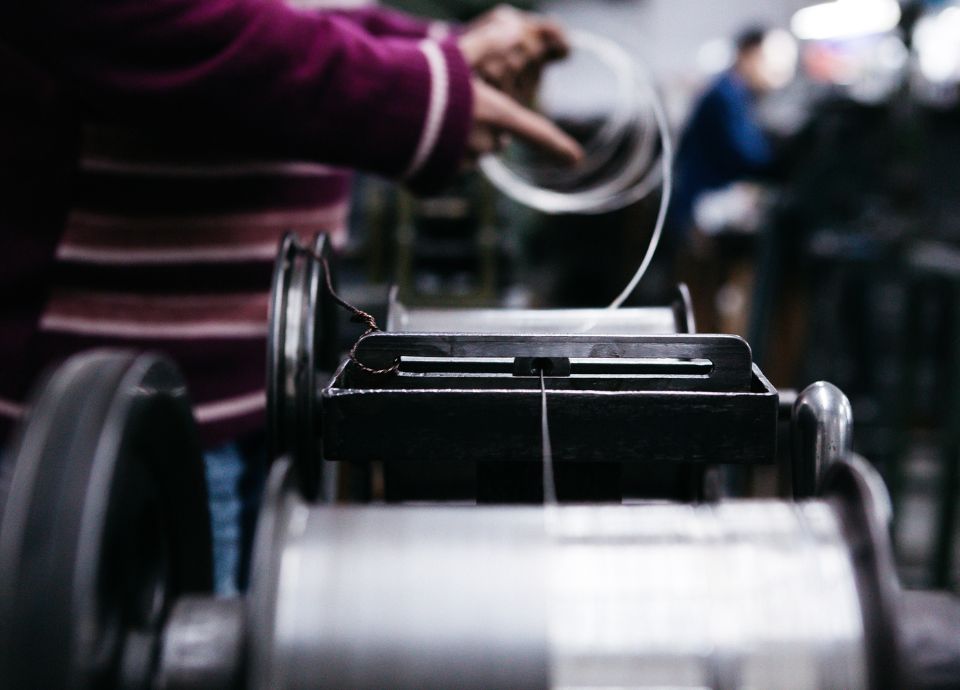
These threads, which in many cases are as thin as a strand of hair, after being pulled and pulled again until they reach the thickness desired by the craftsman, are twisted, which gives them greater resistance, allowing them to be bent and rolled without breaking.
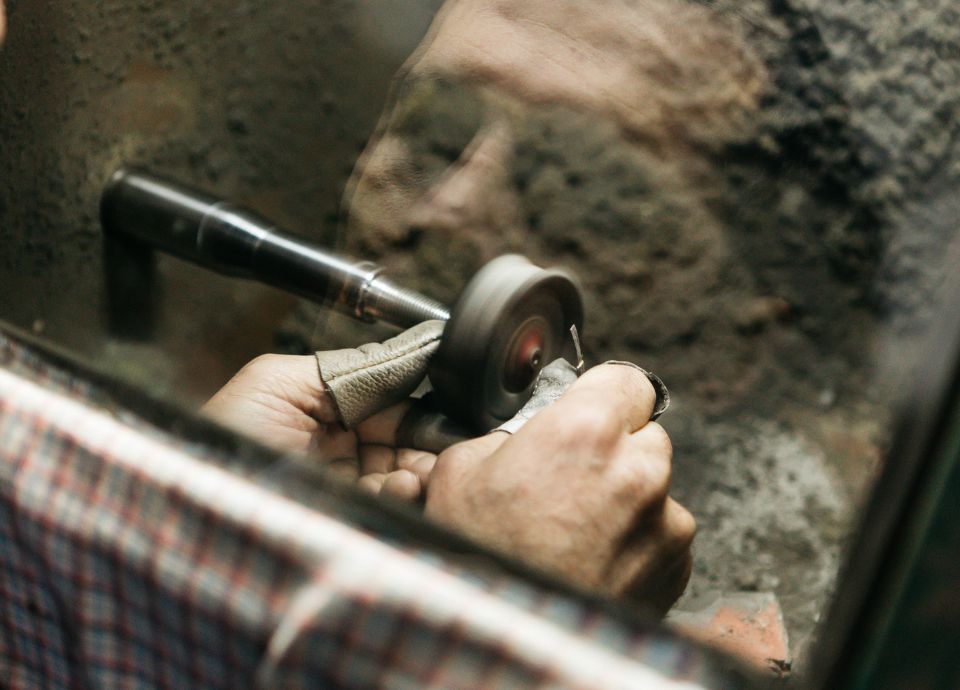
In Portugal, artisans have used and continue to use filigree as a form of artistic expression in traditional jewelry, but also of Portuguese culture through its designs in the form of flowers, waves or fish scales.
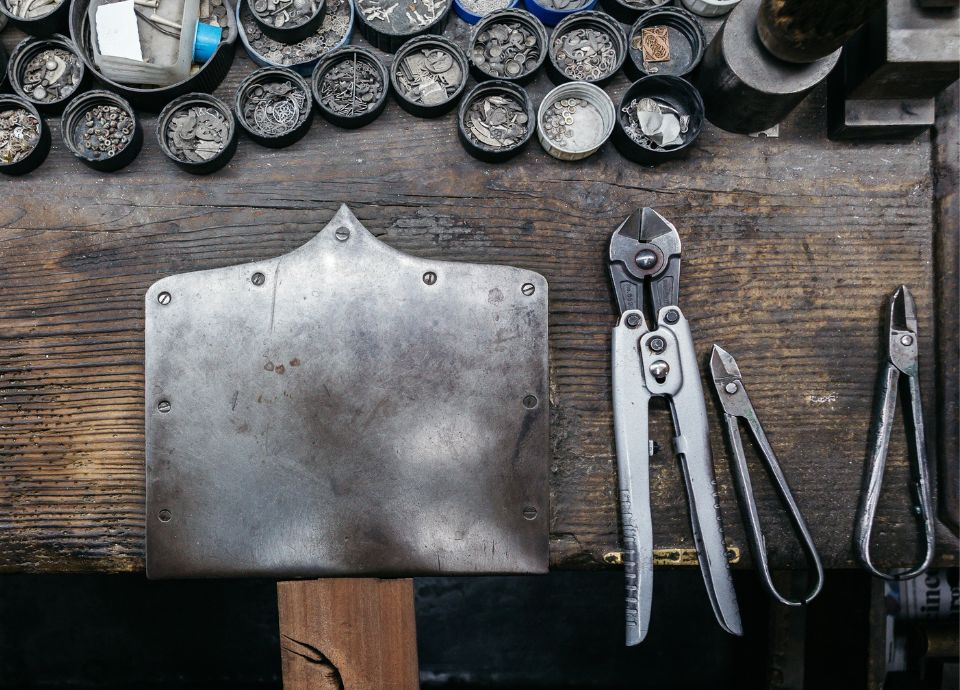
Portuguese filigree is an art that continues to have a very manual production, which requires extreme expertise on the part of the artisan to work the very fine interlaced and welded gold or silver threads that make up each piece.
It is, therefore, internationally recognized for its quality.
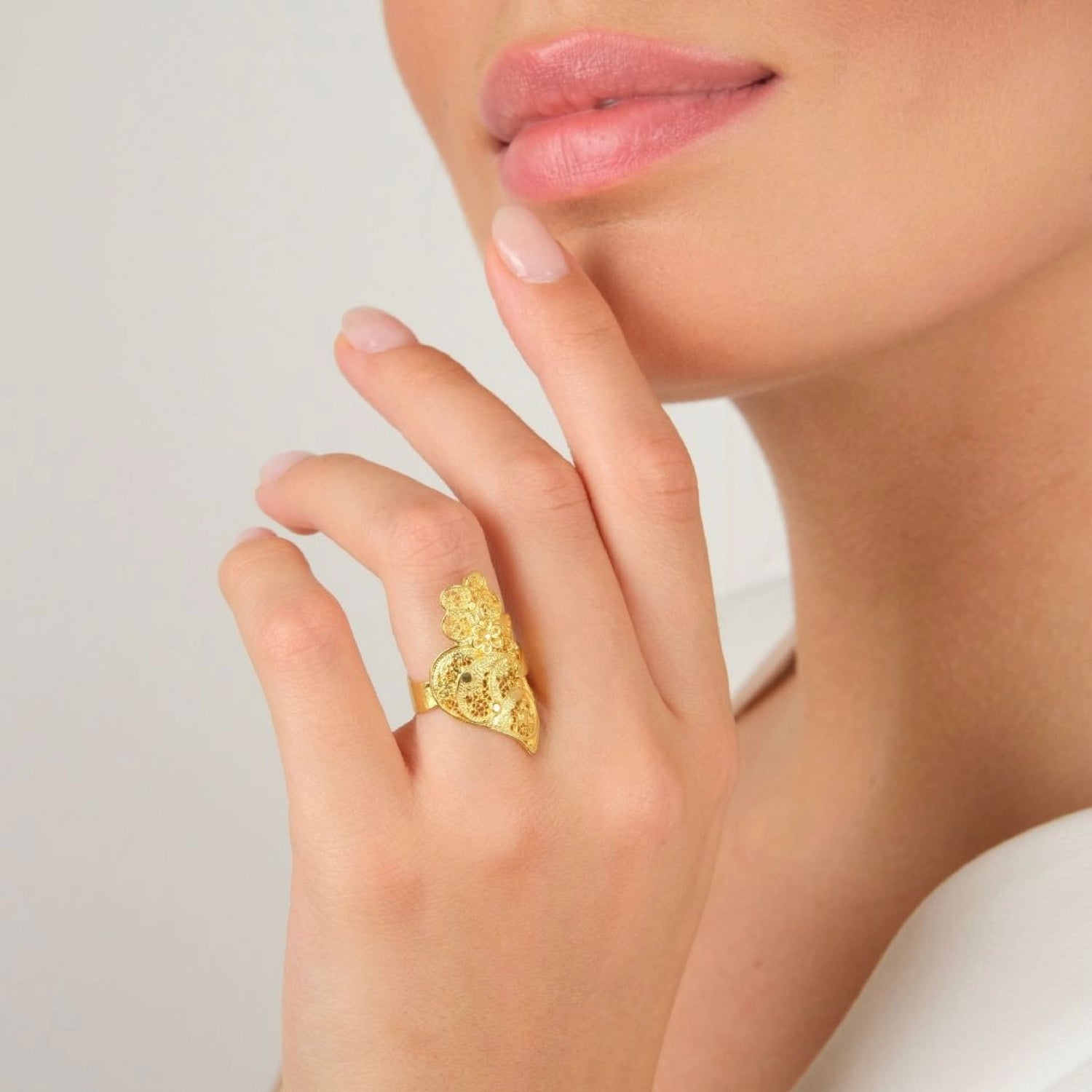
FILIGREE 19.2KT GOLD
The Portuguese Gold Collection, made in 19.2Kt gold, is a selection of traditional Portuguese jewelry. Portuguese gold is among the purest in the world and is certified by the Portuguese Mint Office.
Discover our 19.2kt Filigree jewels.


